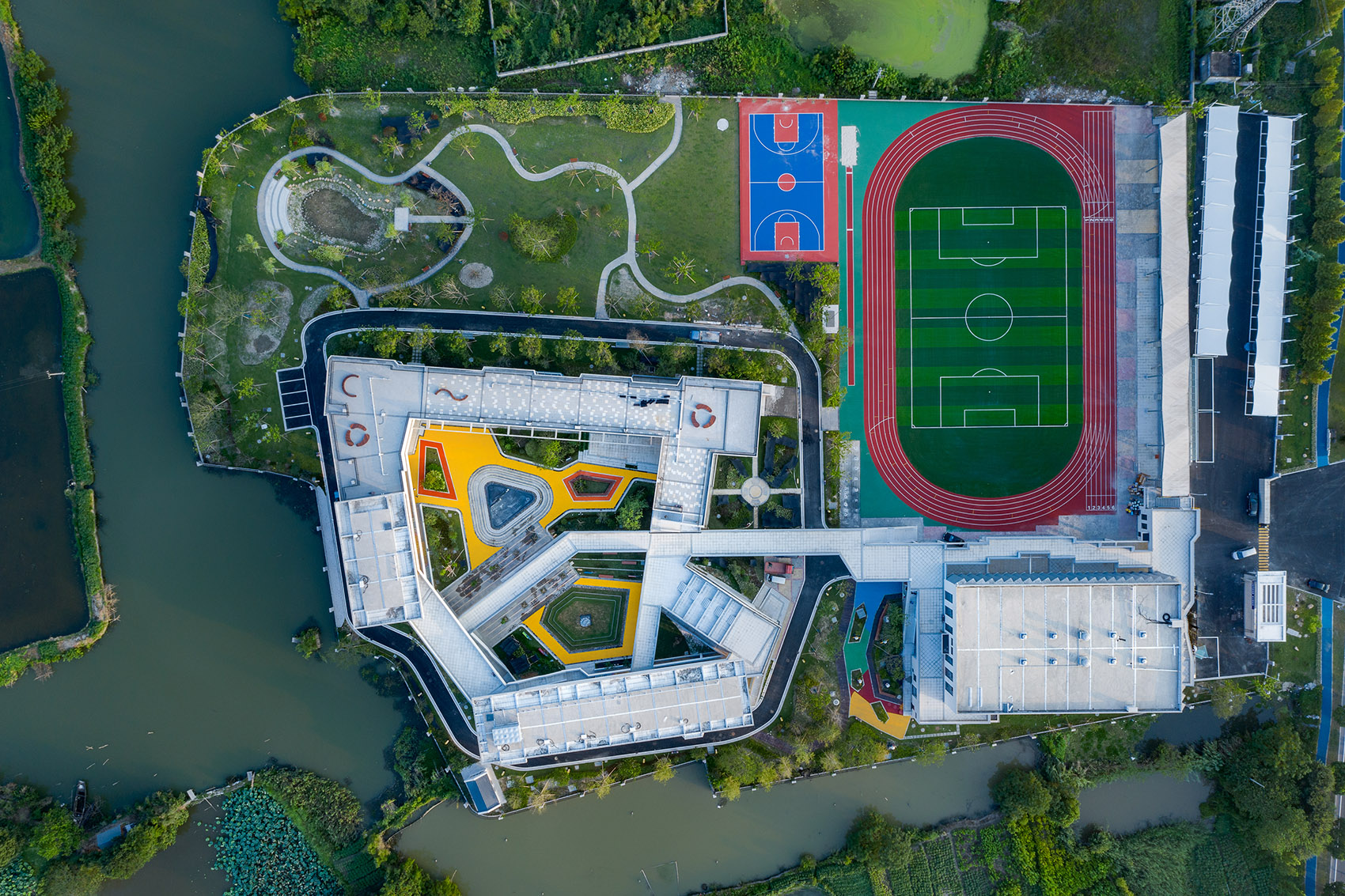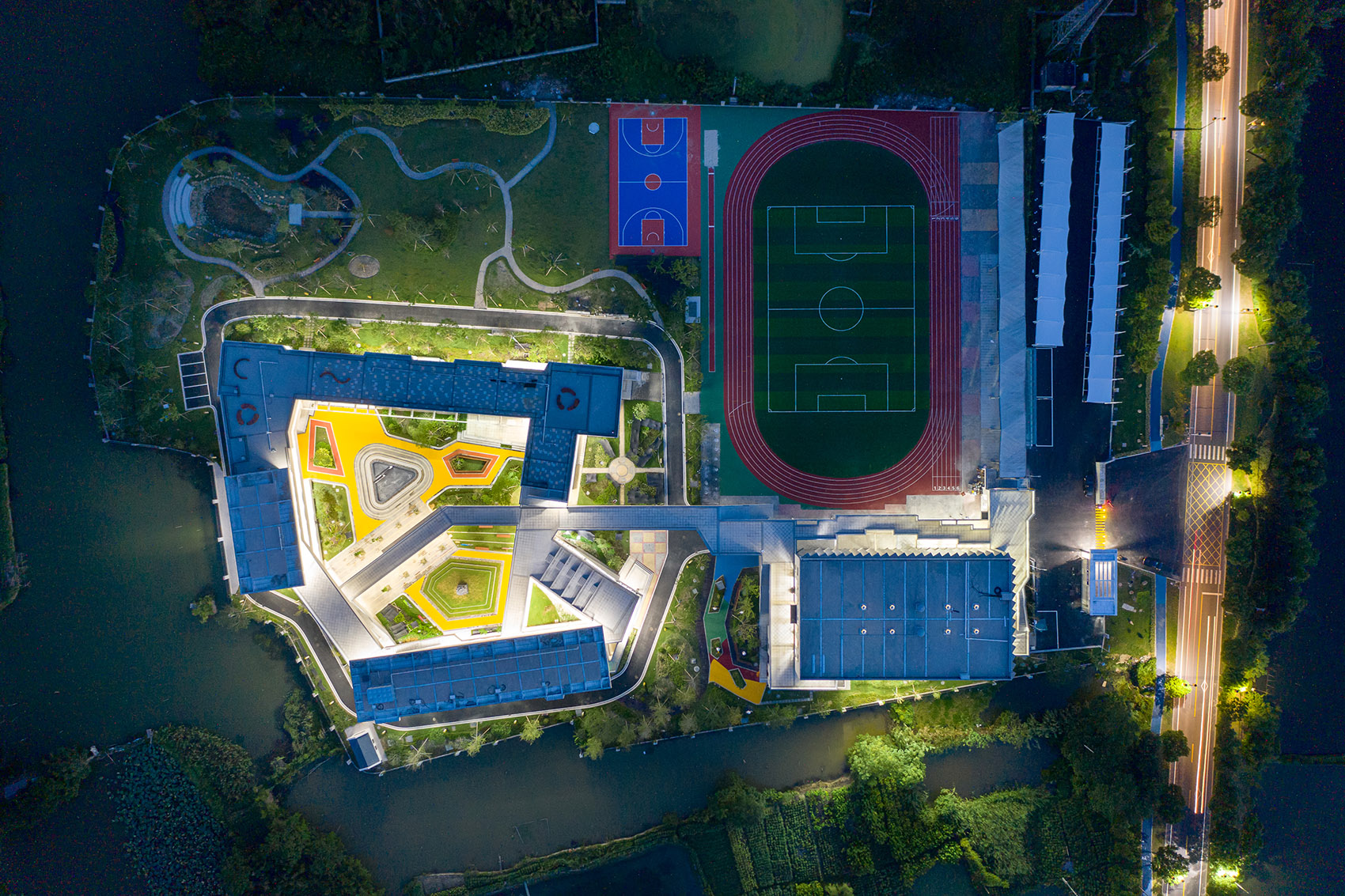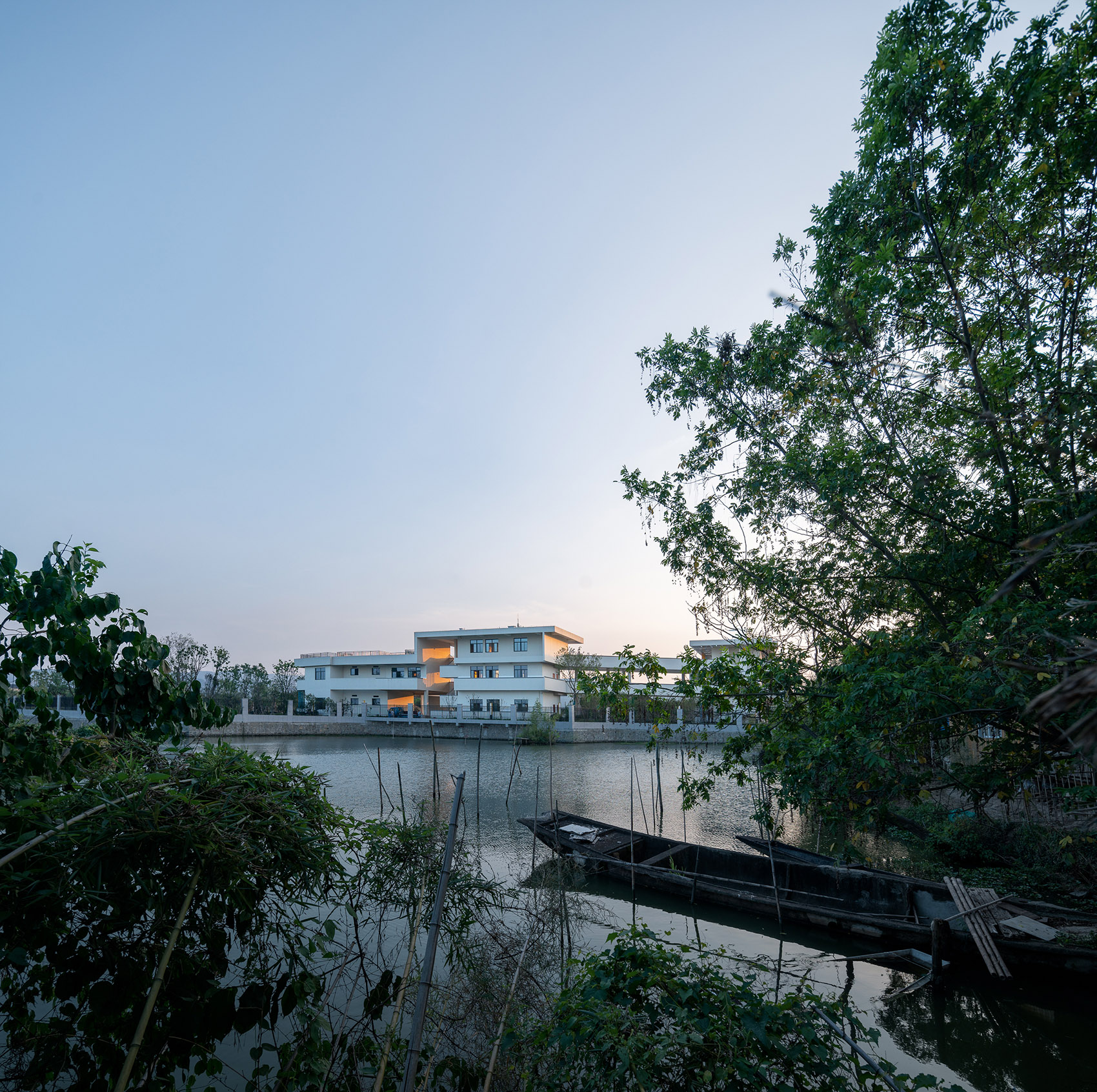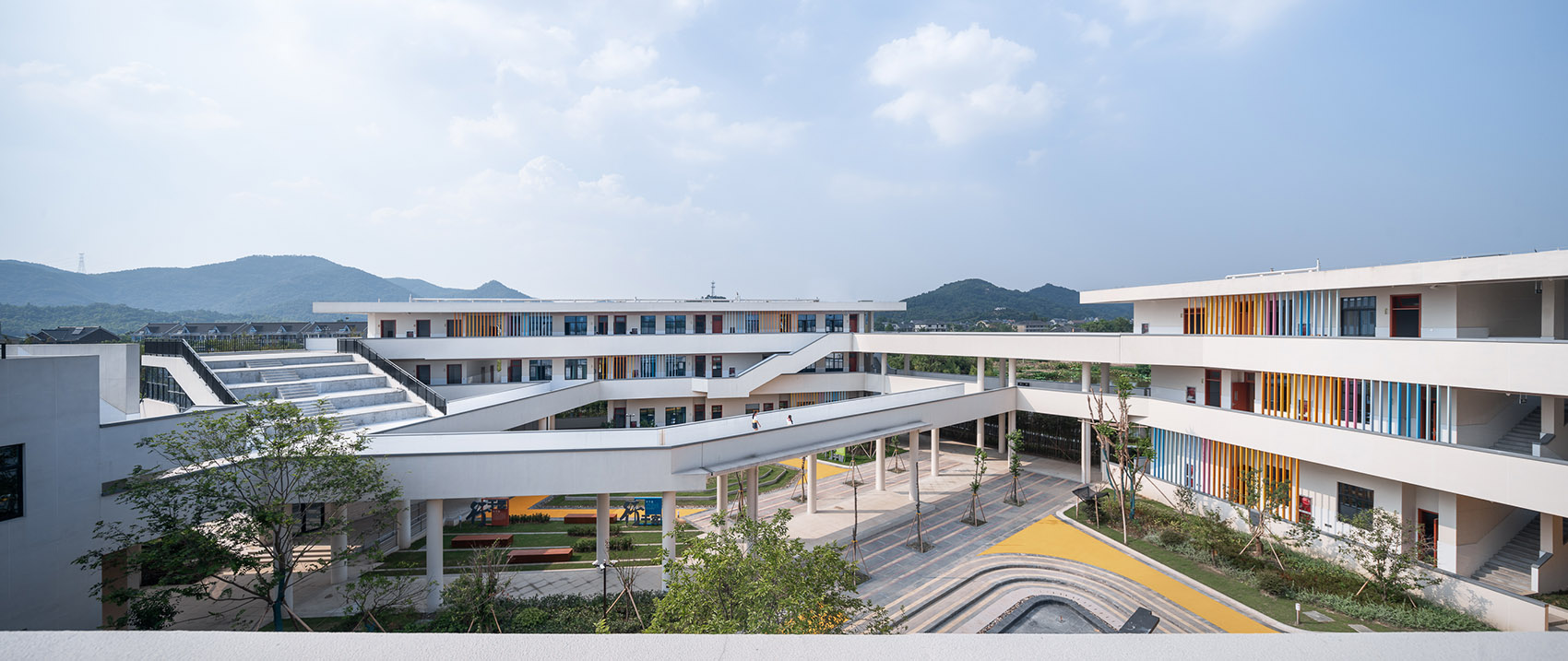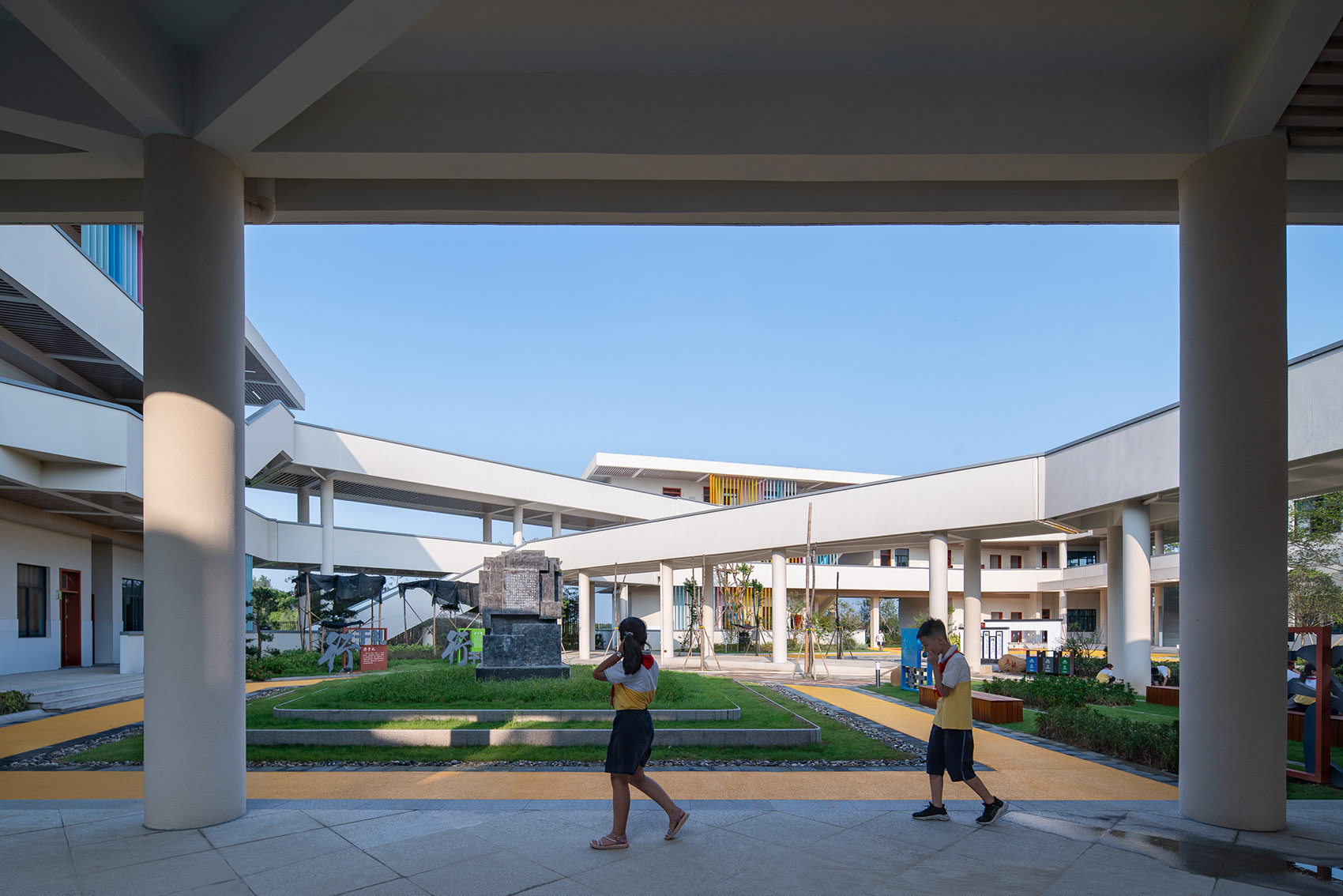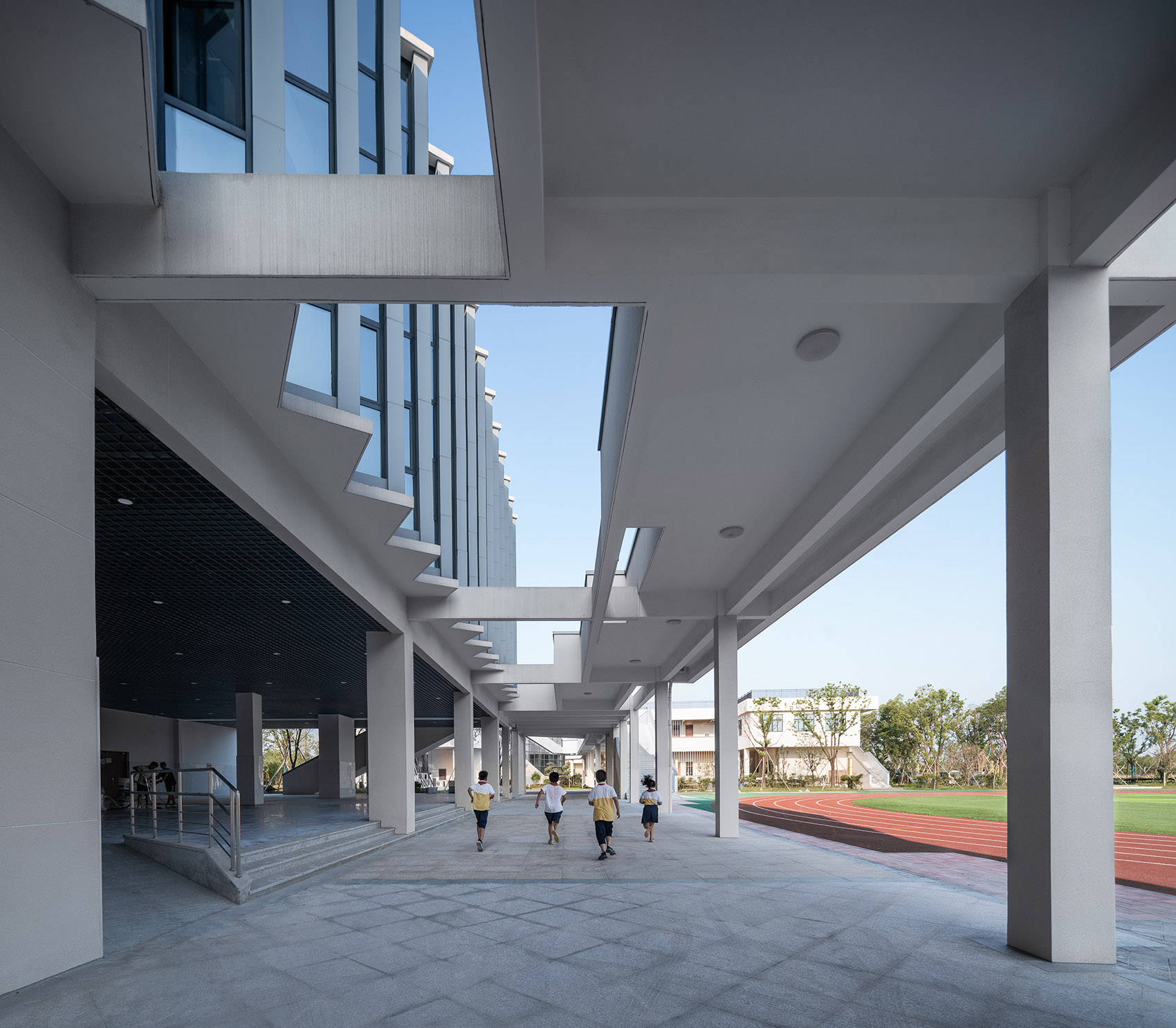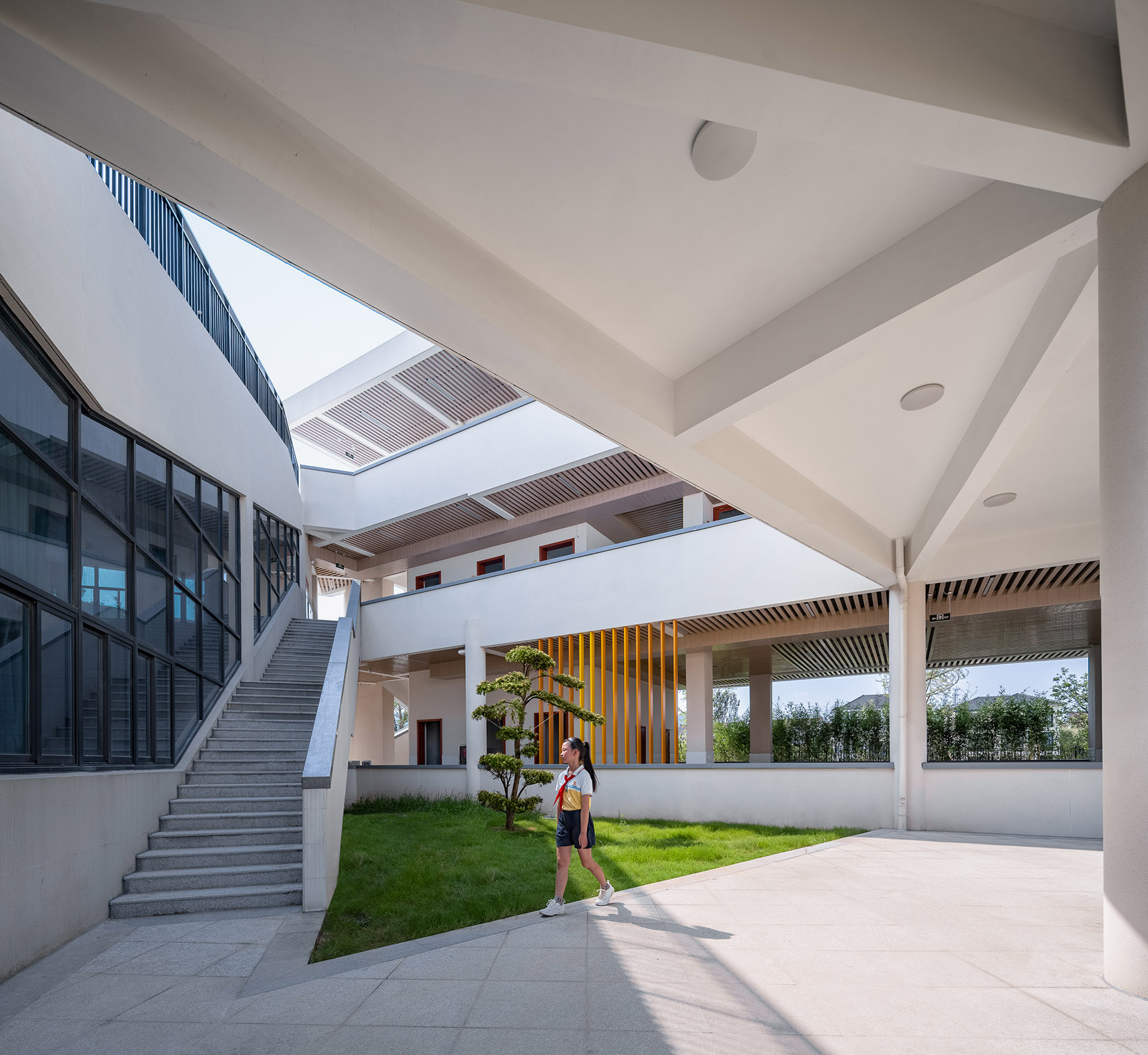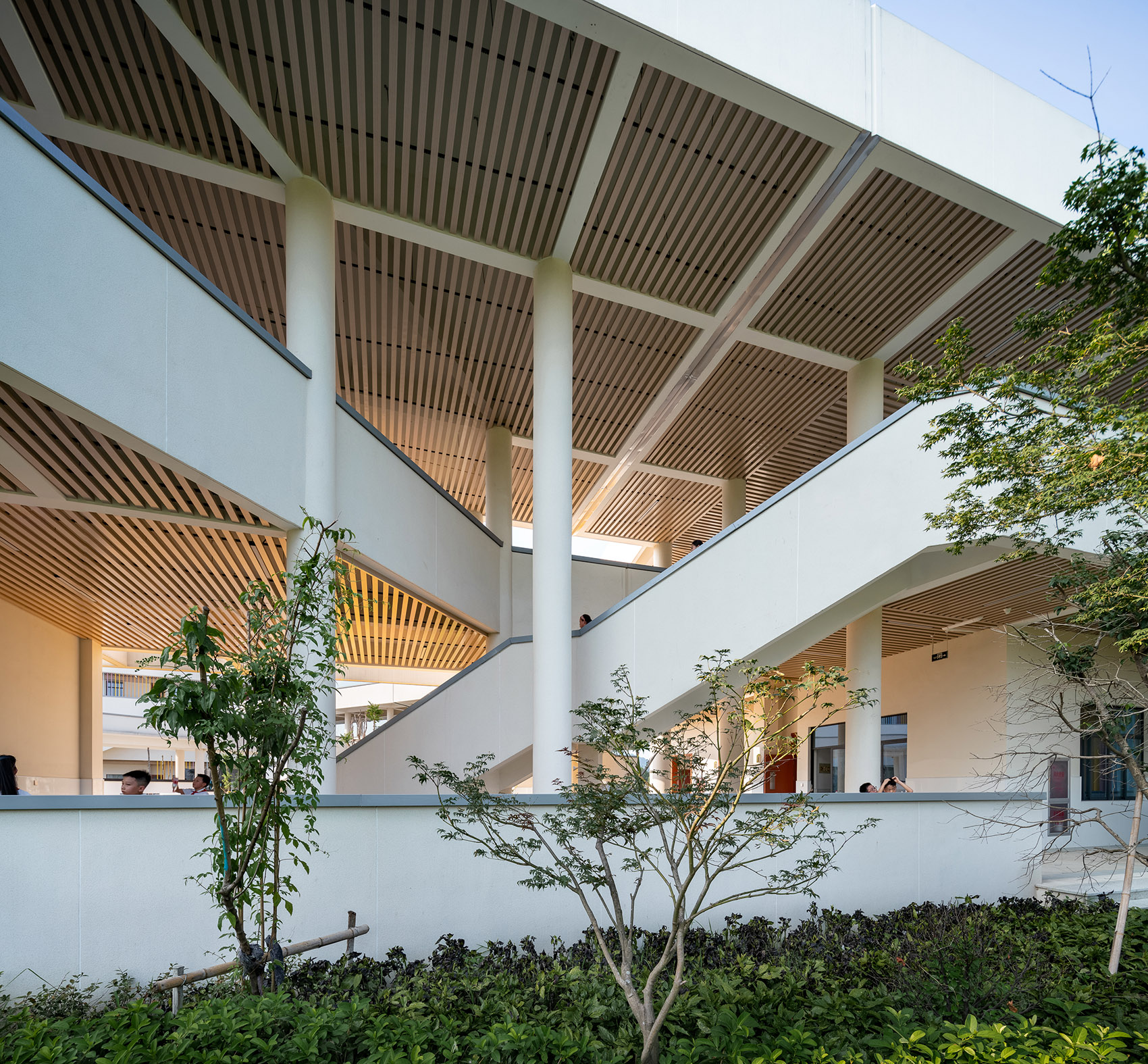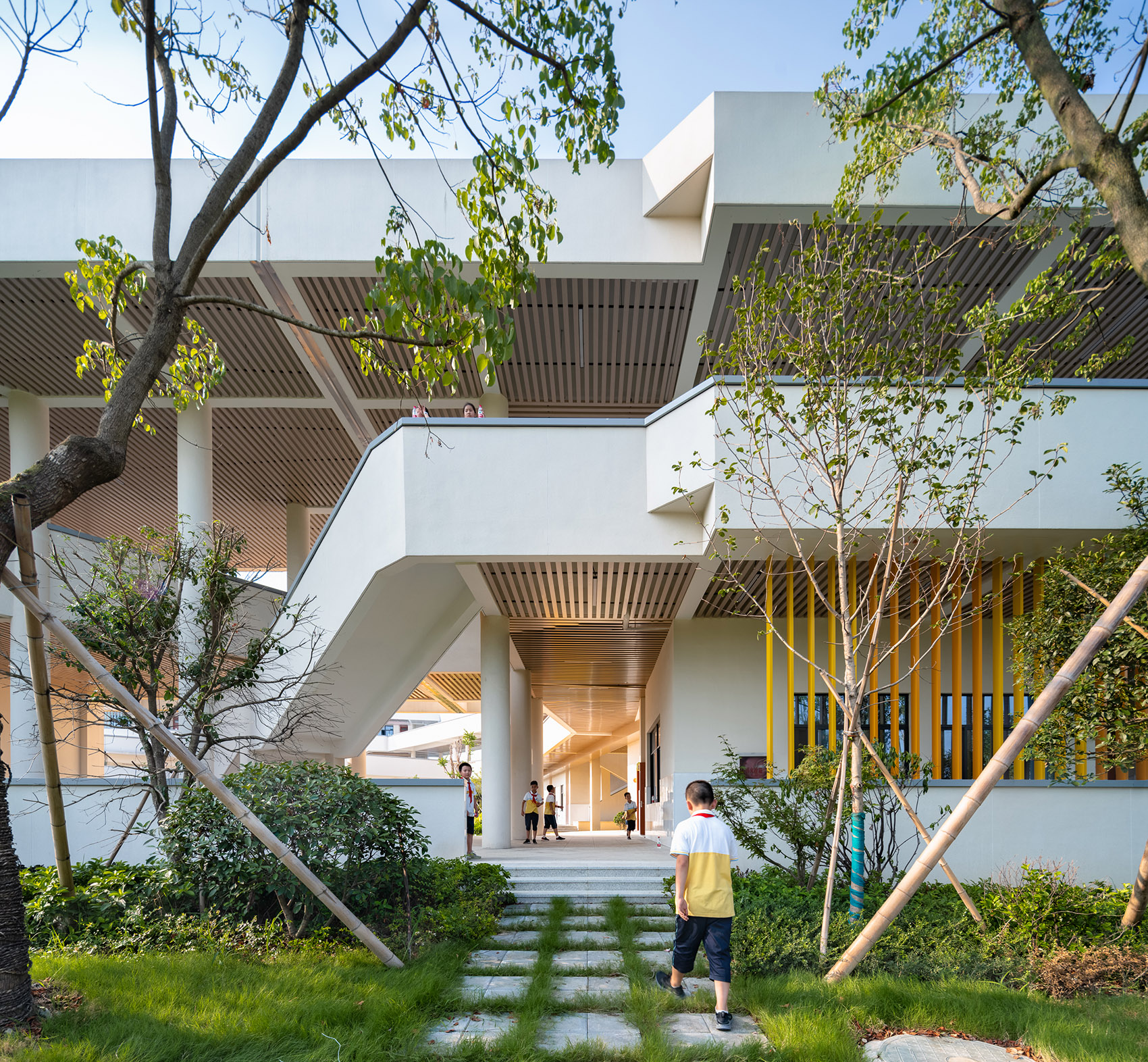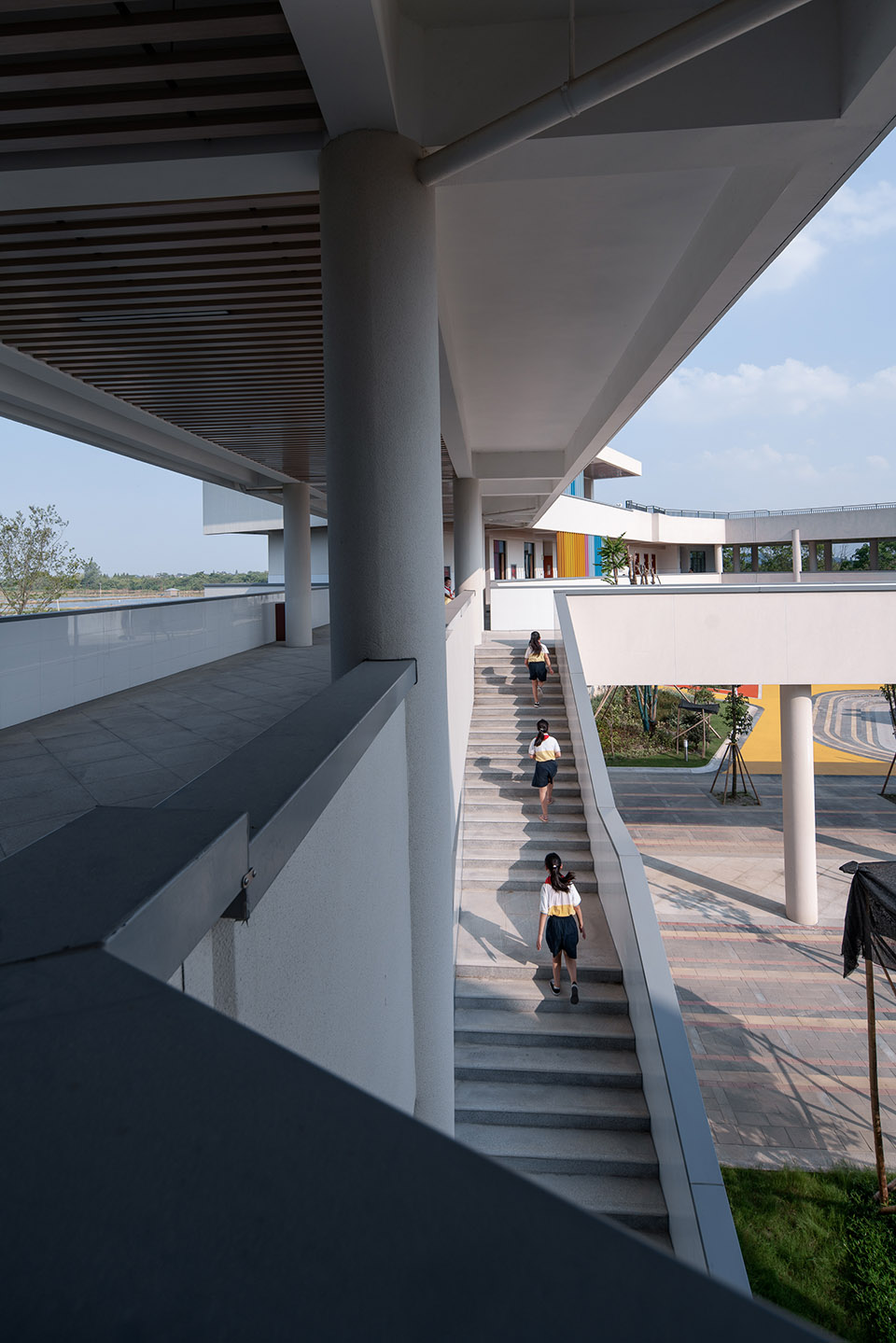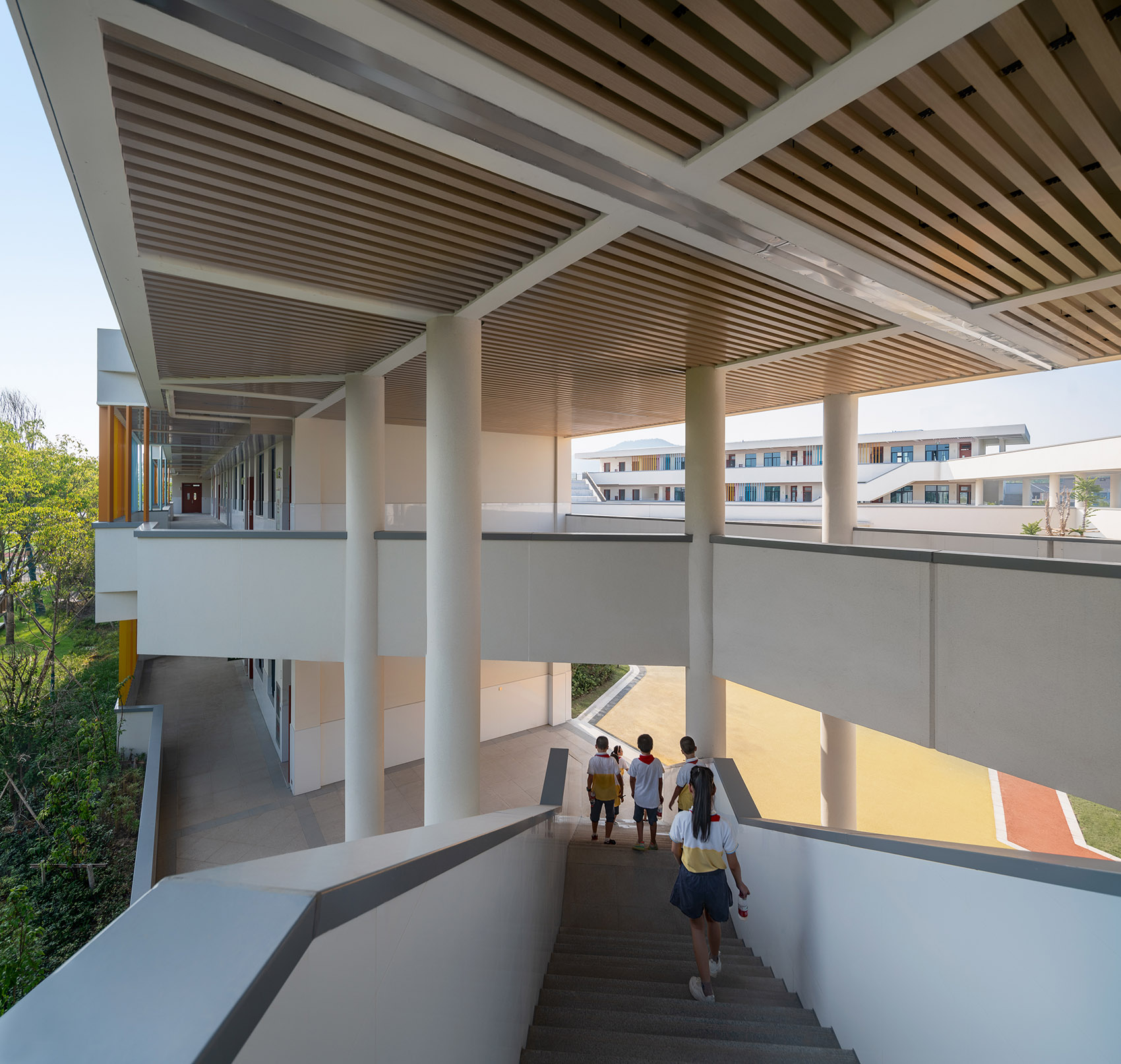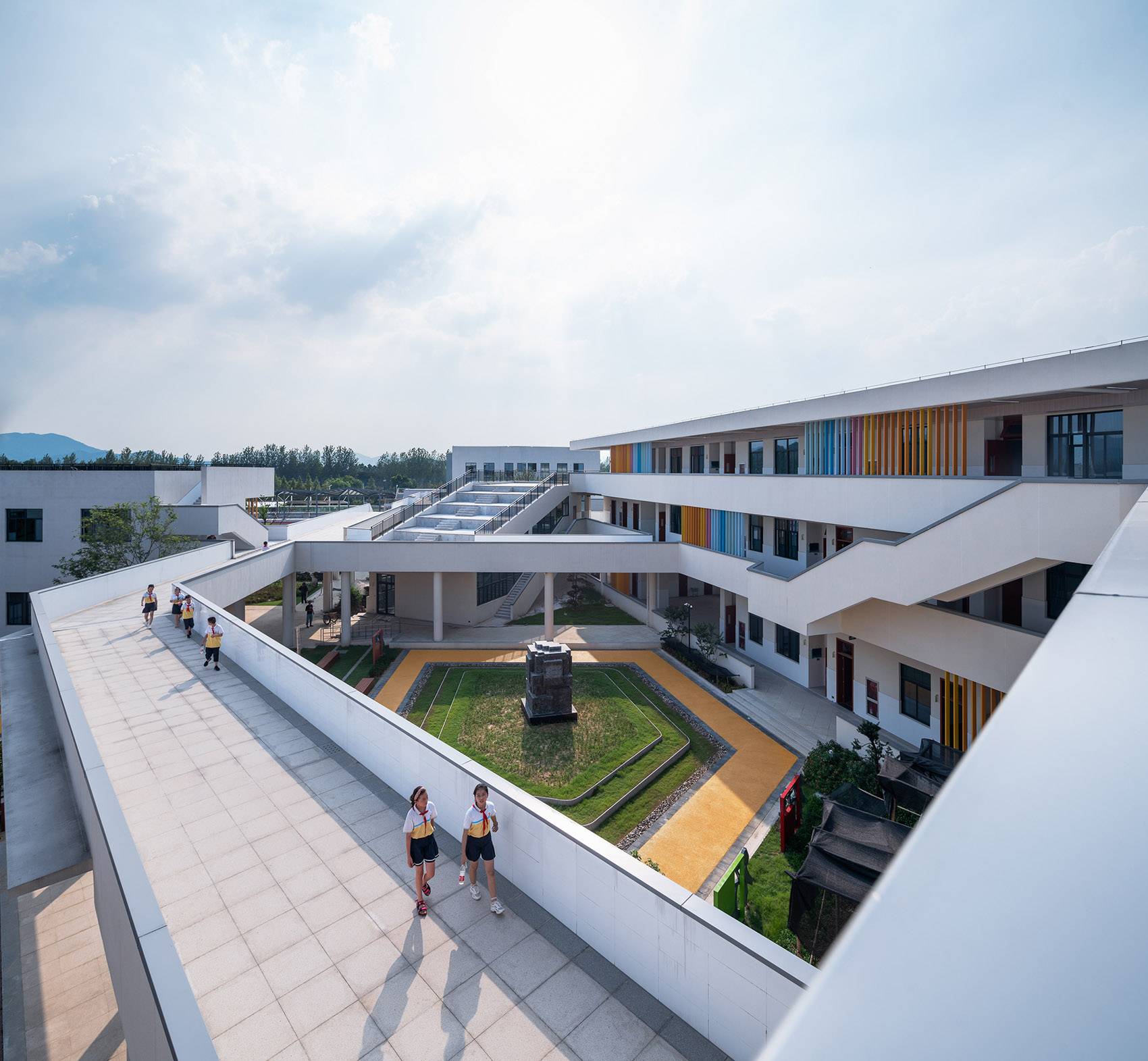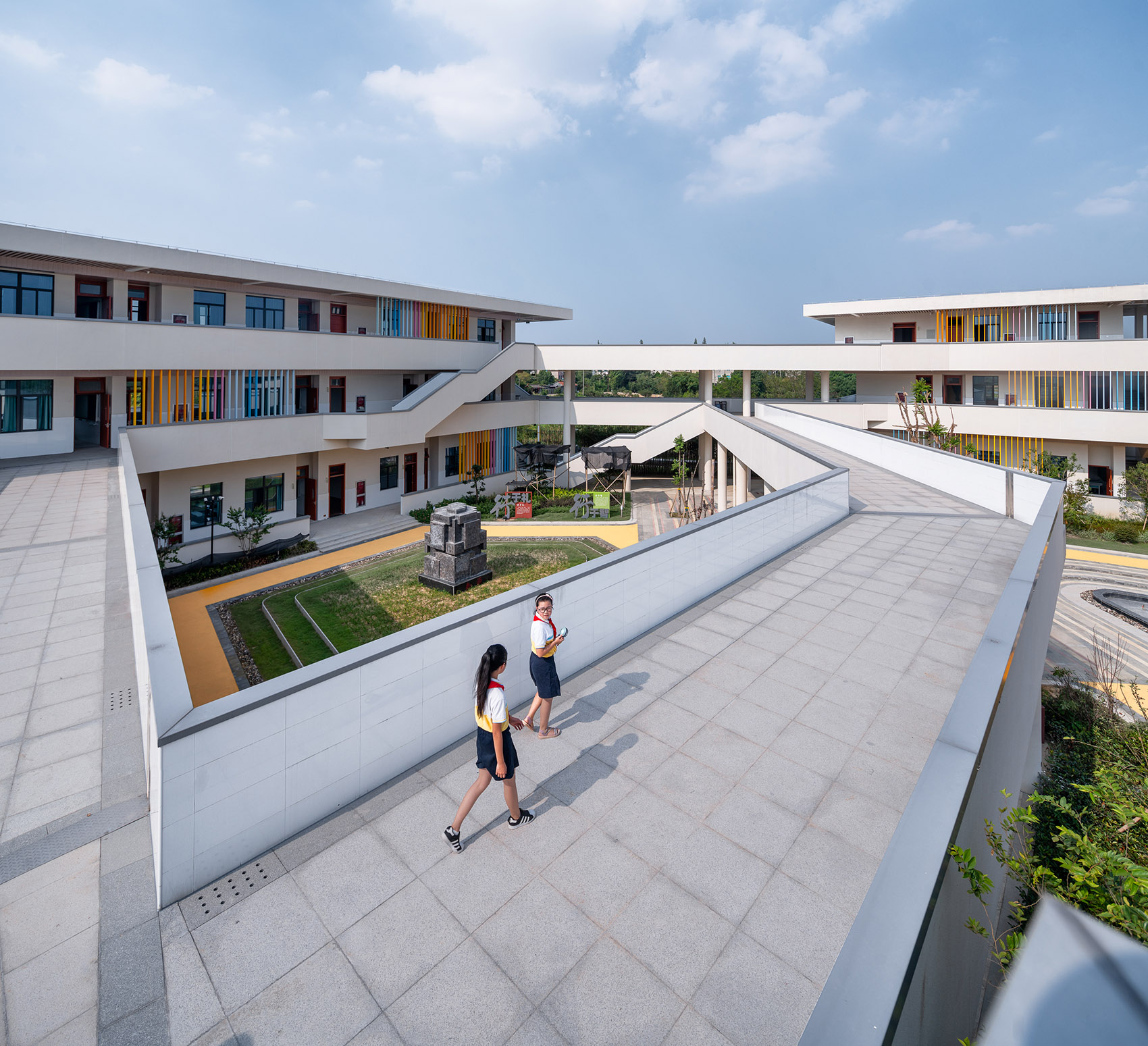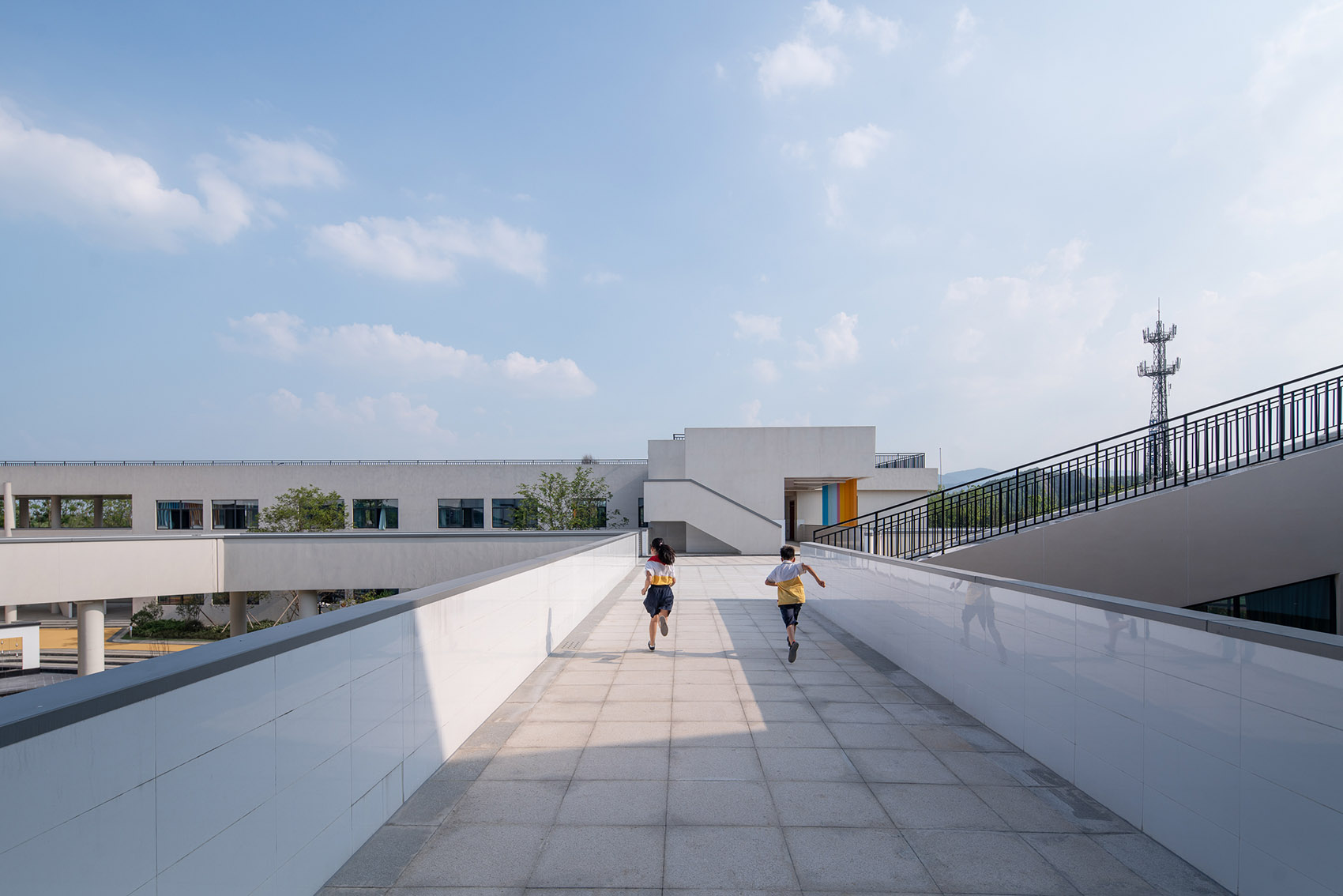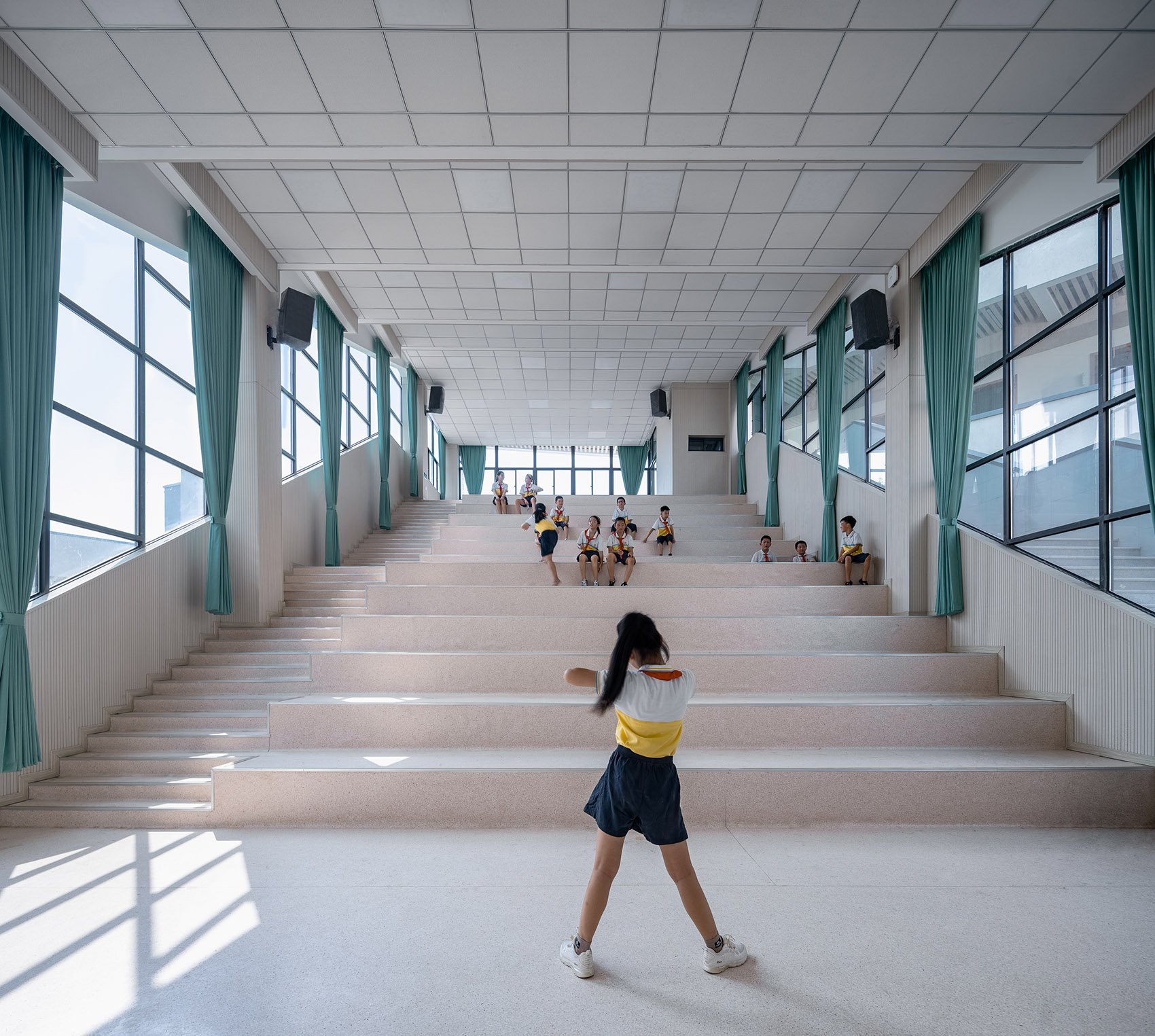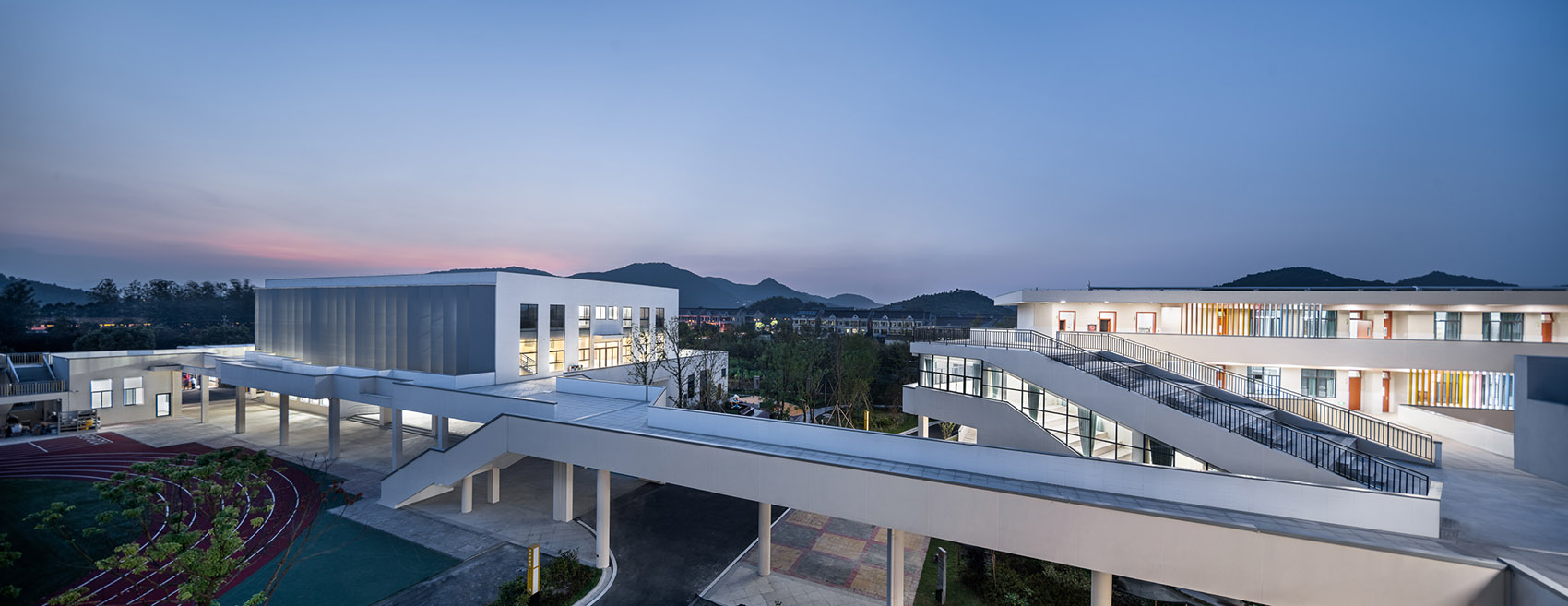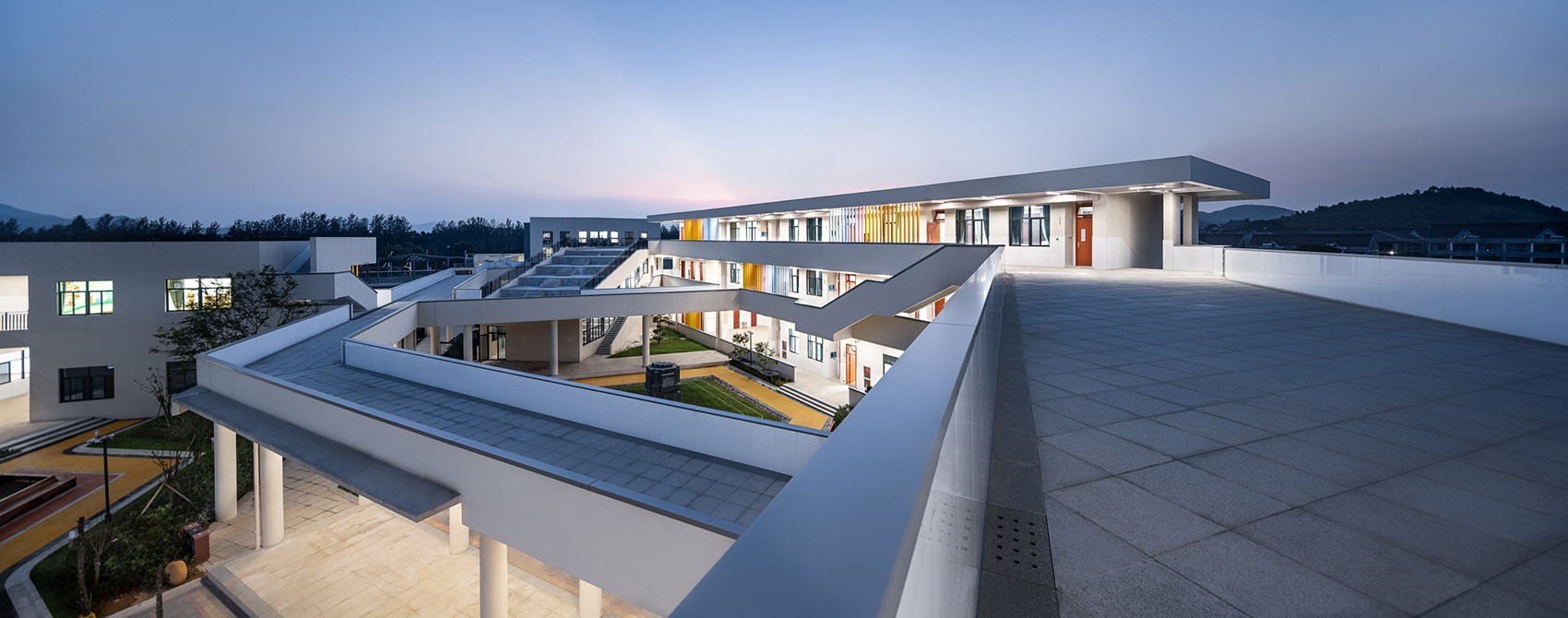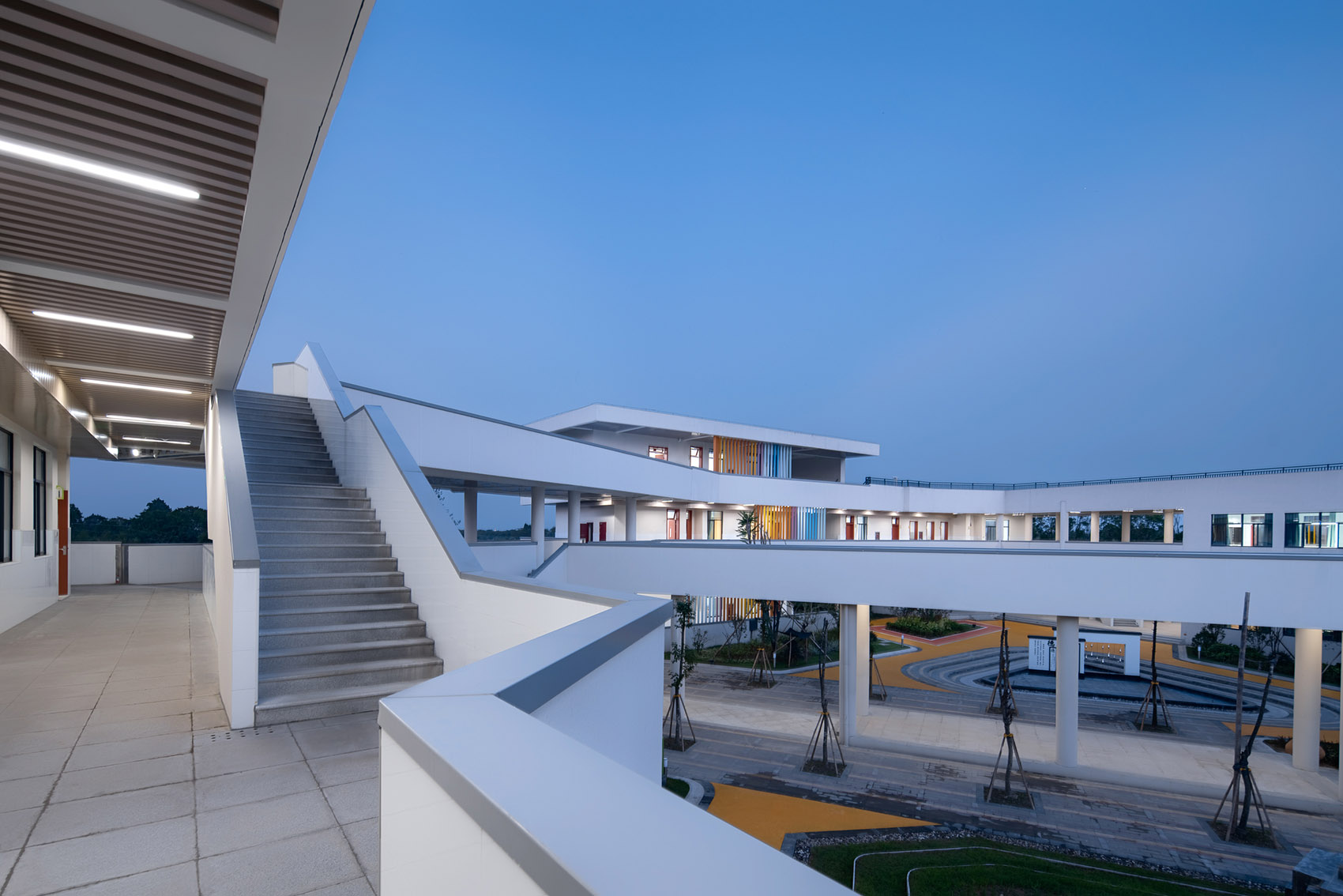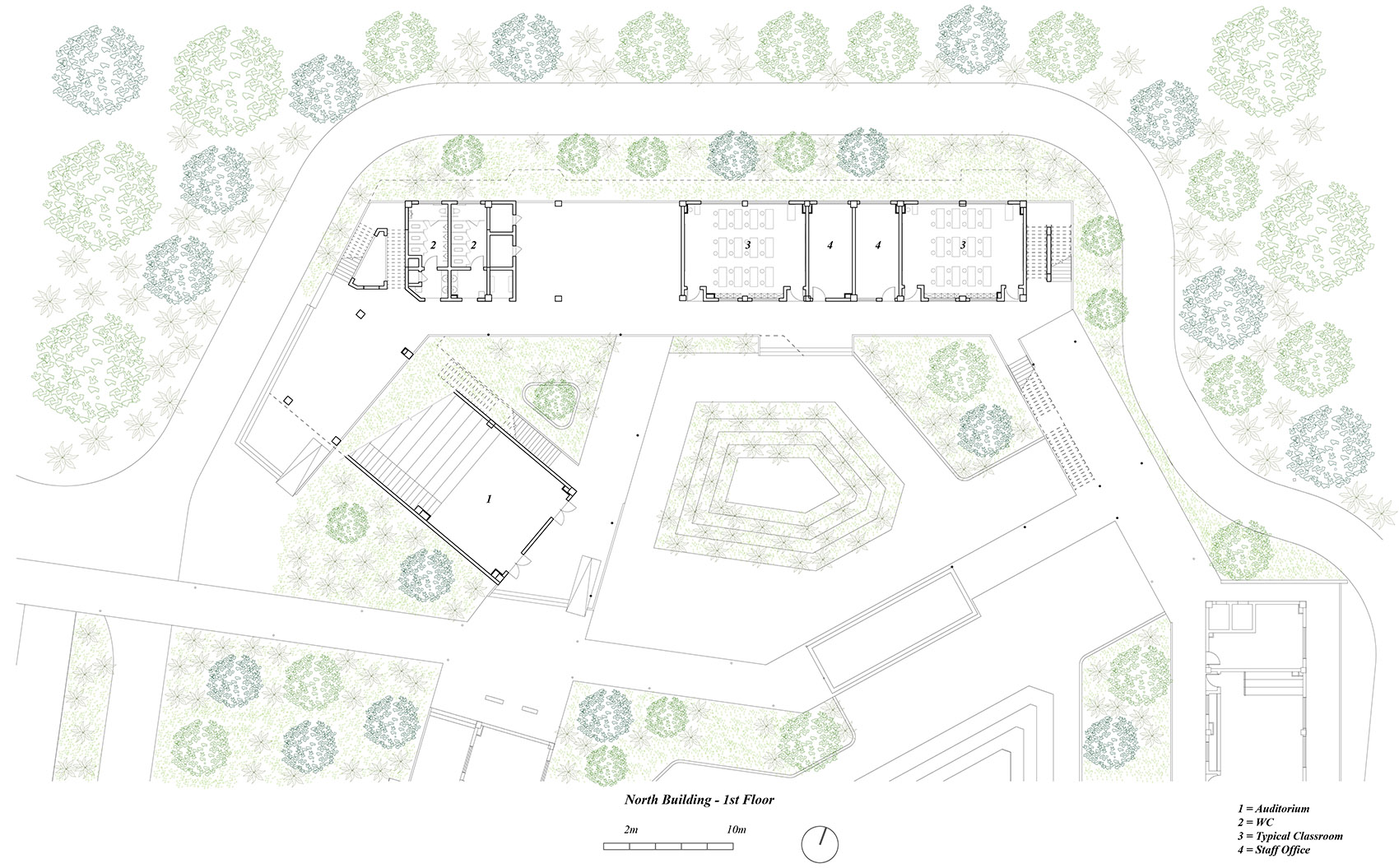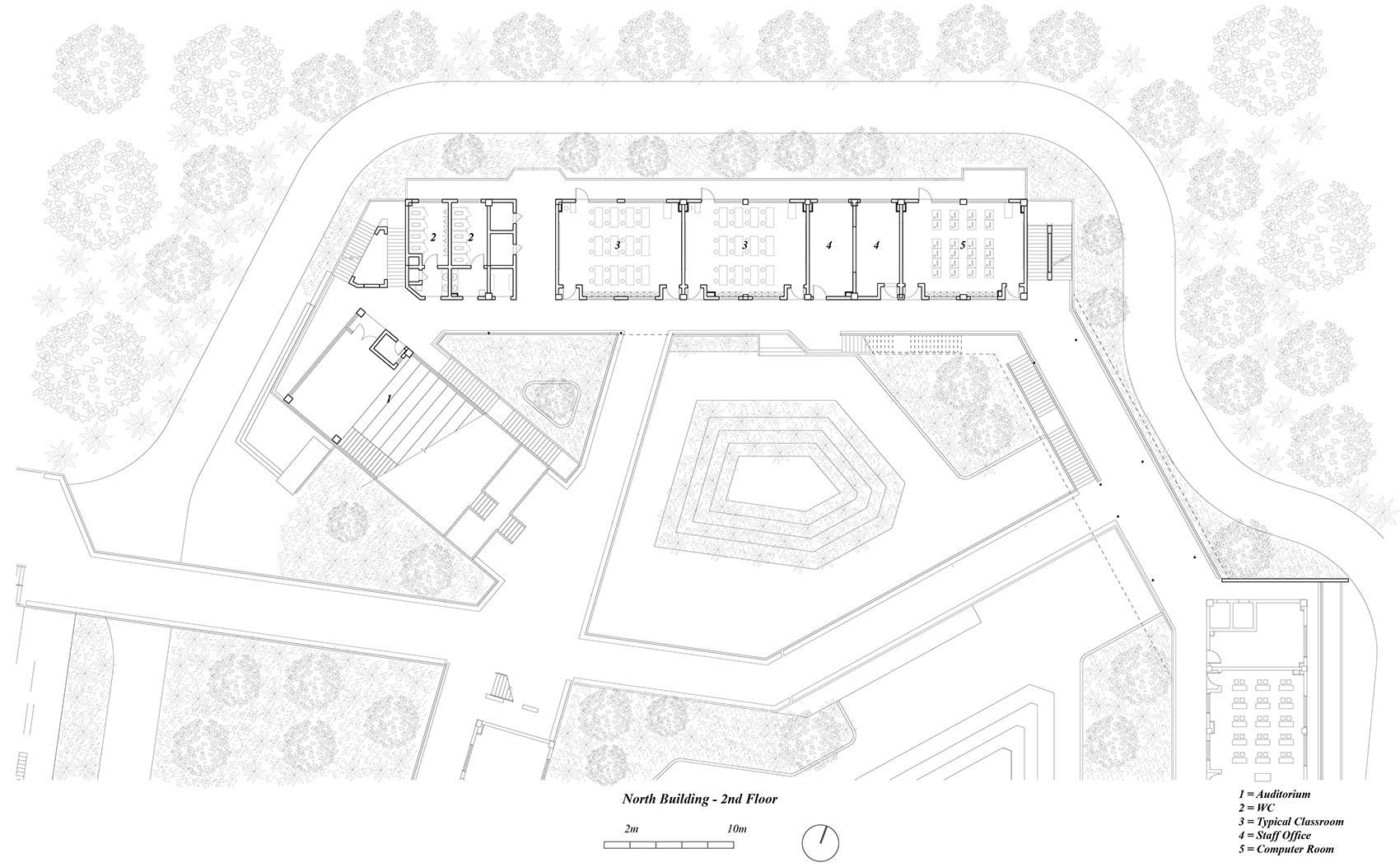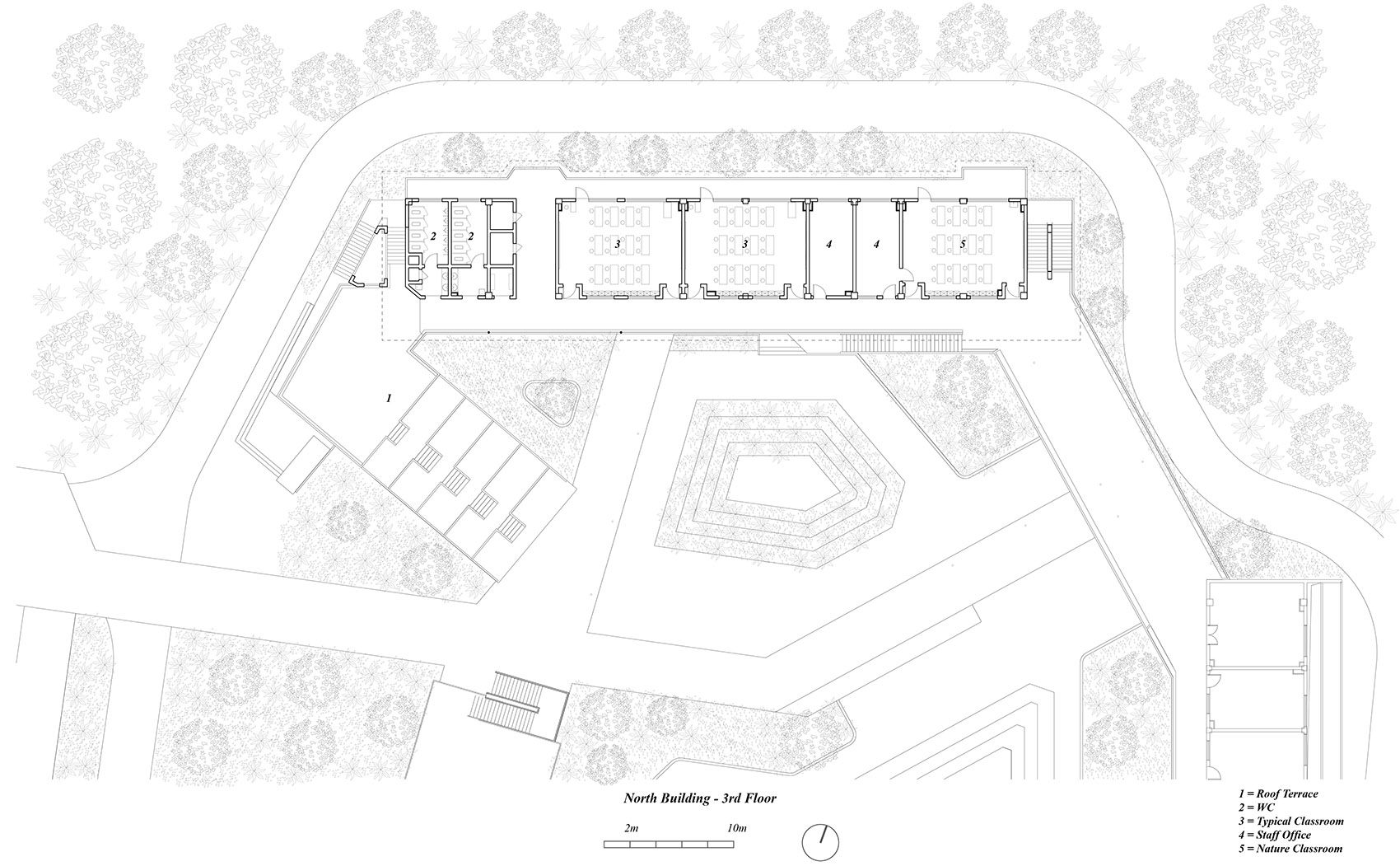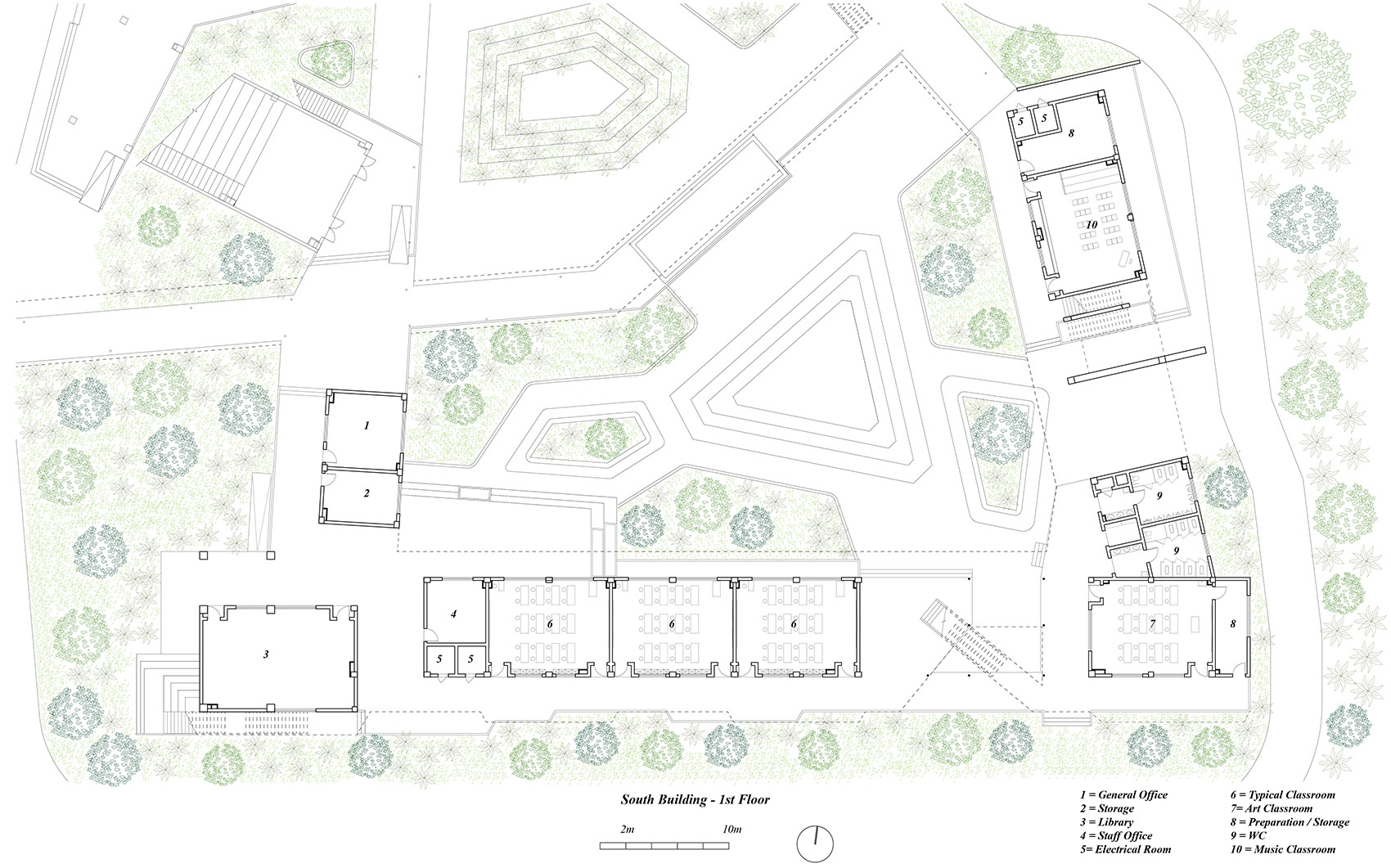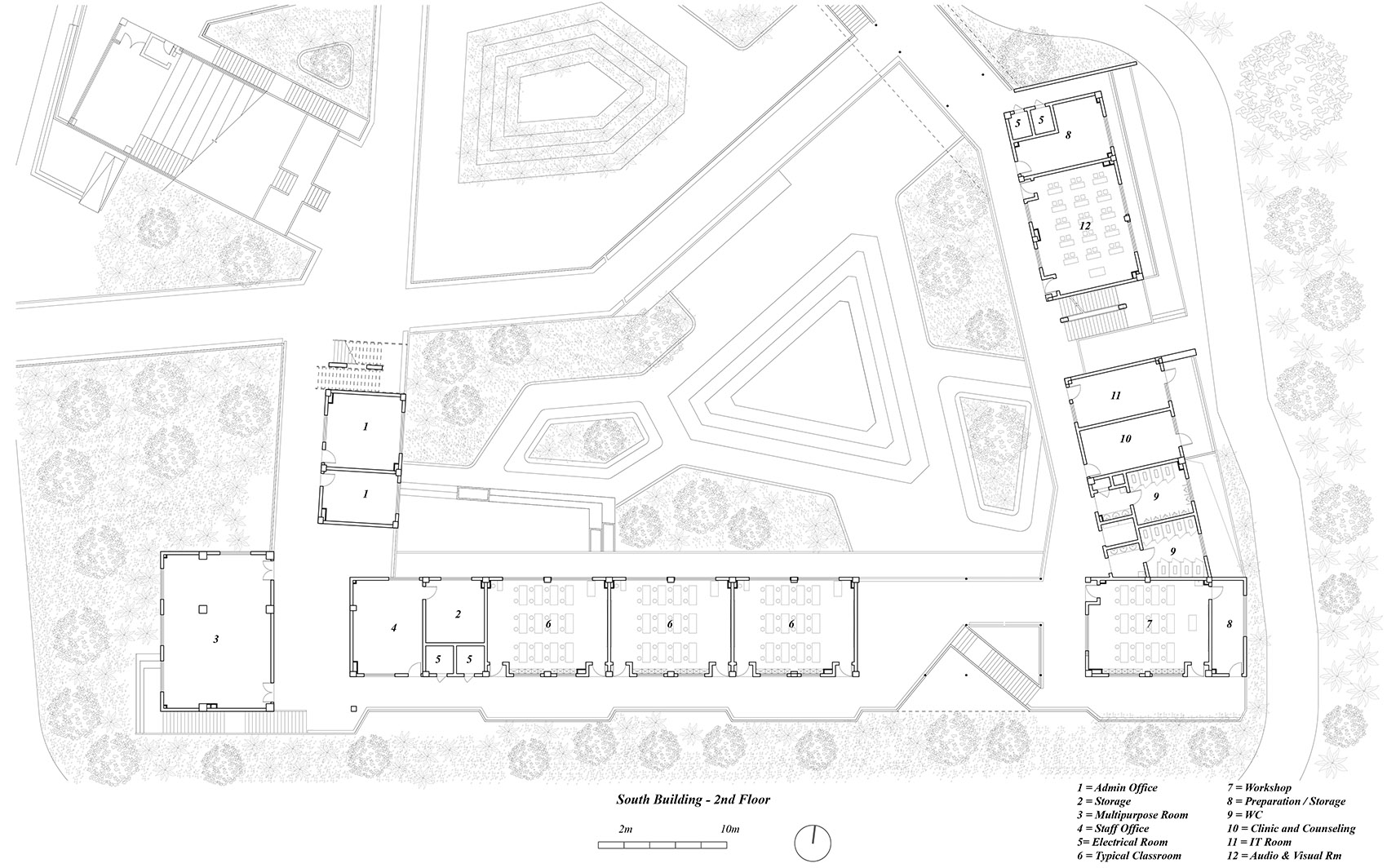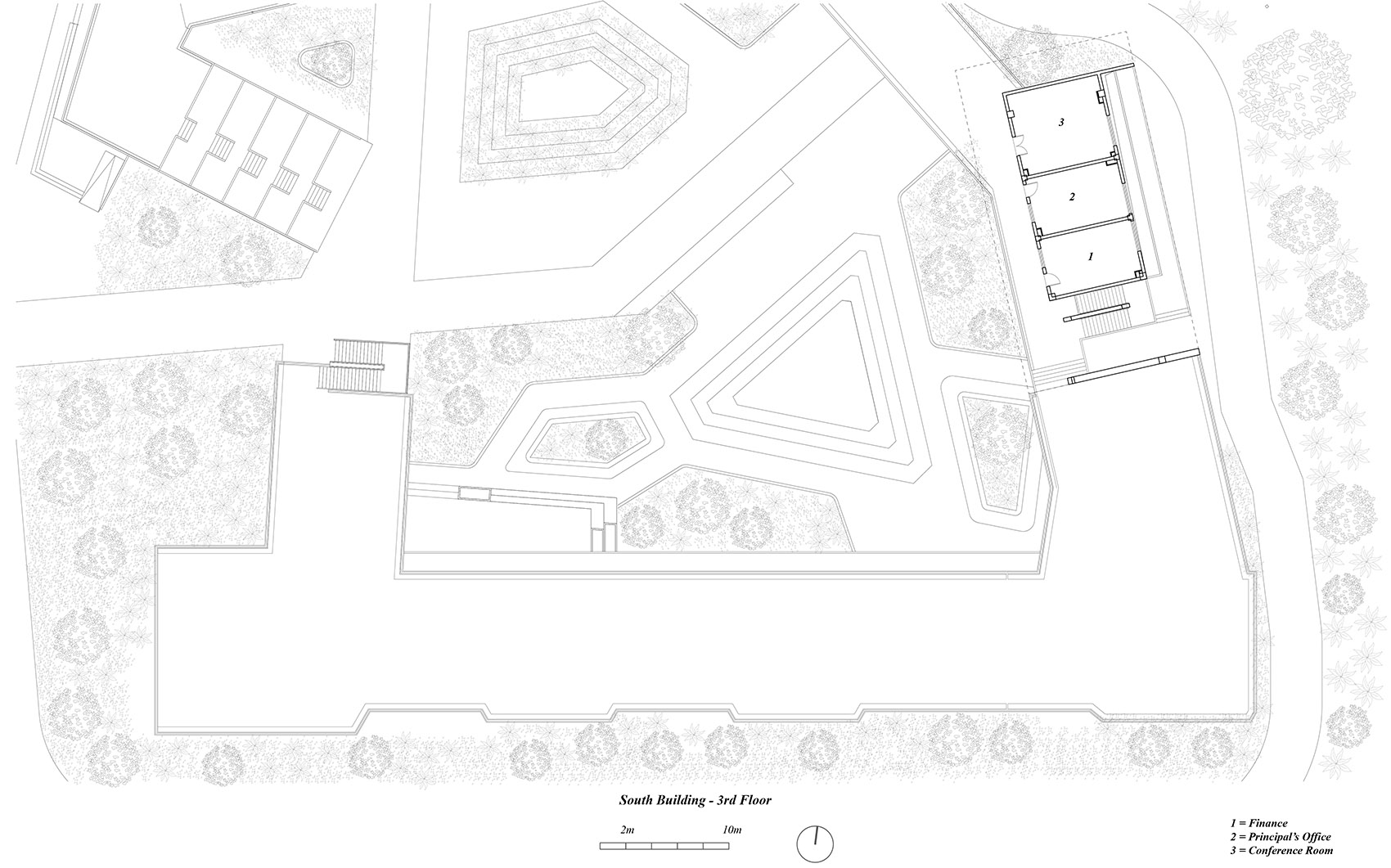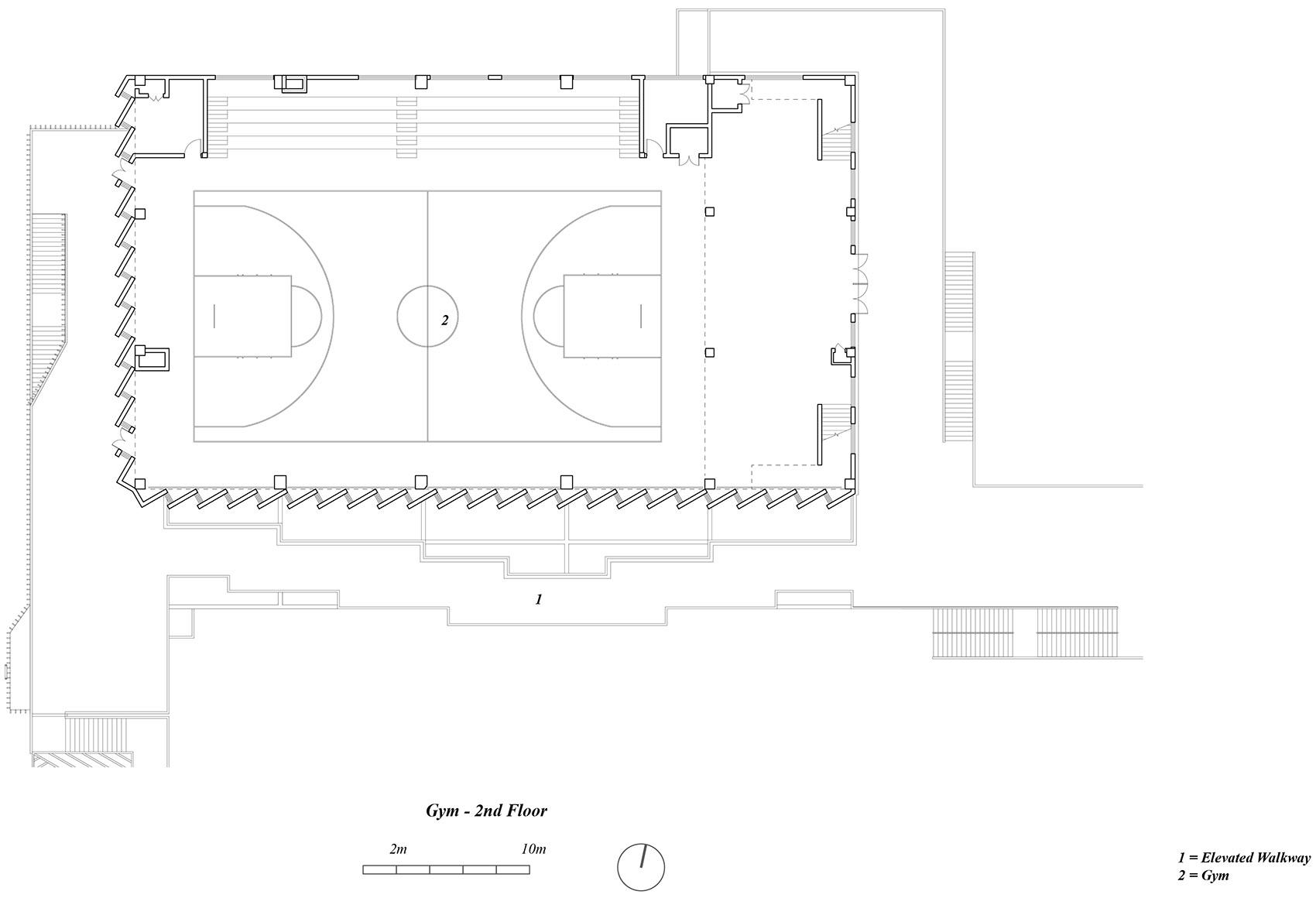2015年,邱佳羽和莫哲昕(Paul Mok)初次来到二都小学时,全校师生在两栋建于70年代,日益老旧的预制结构建筑内上课。因为多年的城市化进程,在三合乡本地上小学的孩子们越来越少,每个班的人数常常远不到一般小学的48人制,他们需要从各个村庄乘坐校车前来上课,客观上形成了小班化教学的局面。浙江省和本地的教育主管部门、小学校长都觉得应该做些什么来提升教学环境,以适应这种新的教学形势。我们也在决策的形成中做了设计方面的咨询服务。经过多个月的酝酿,二都小学确认异地重建,作为乡村小学小班化的试点。
▼顶视图,top view ©吴清山
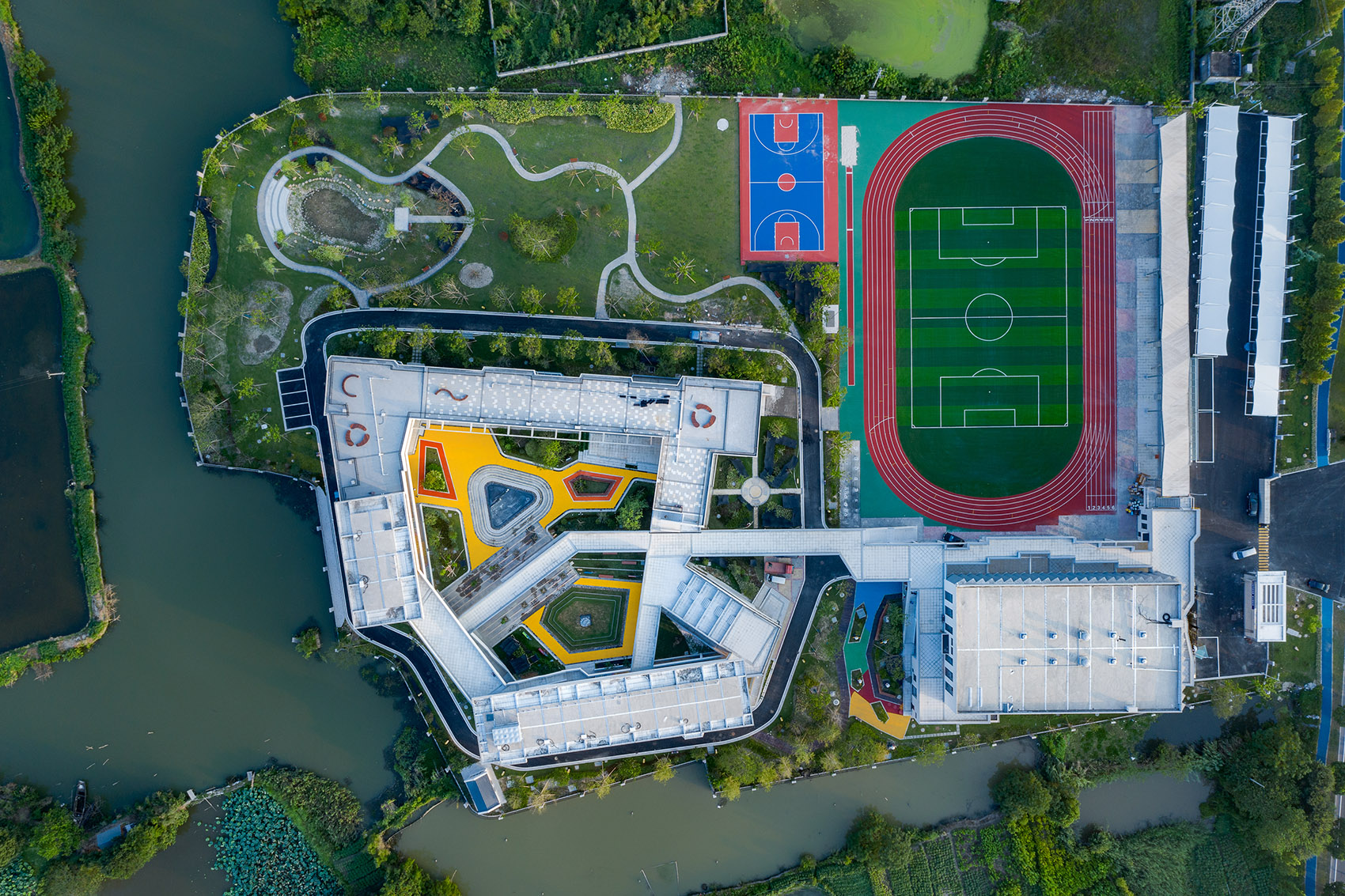
Paul Mok and Qiu Jiayu (邱佳羽) first visited the old Erdu Primary School in 2015. It was a deteriorating prefabricated structure that was built in the 70s. Years of rigorous rural-urban migration have led to a significant reduction of students in the area. As a regional primary school, Erdu served a growing number of villages from where kids commute via school buses to Erdu. Yet the number of students per class fell far short of 48 which is the standard class size in China.
The local and provincial education bureaus, together with the school’s headmaster, discussed small-class-teaching as possibly a more suitable teaching model for primary schools in rural and suburban villages. Mok and Qiu provided design consultation along the way. After months of conversations and feasibility studies, it was decided that Erdu Primary will be rebuilt in a new location, and it shall be built as a prototype for small-class teaching in rural villages.
▼项目远景,distanced view of the project ©吴清山
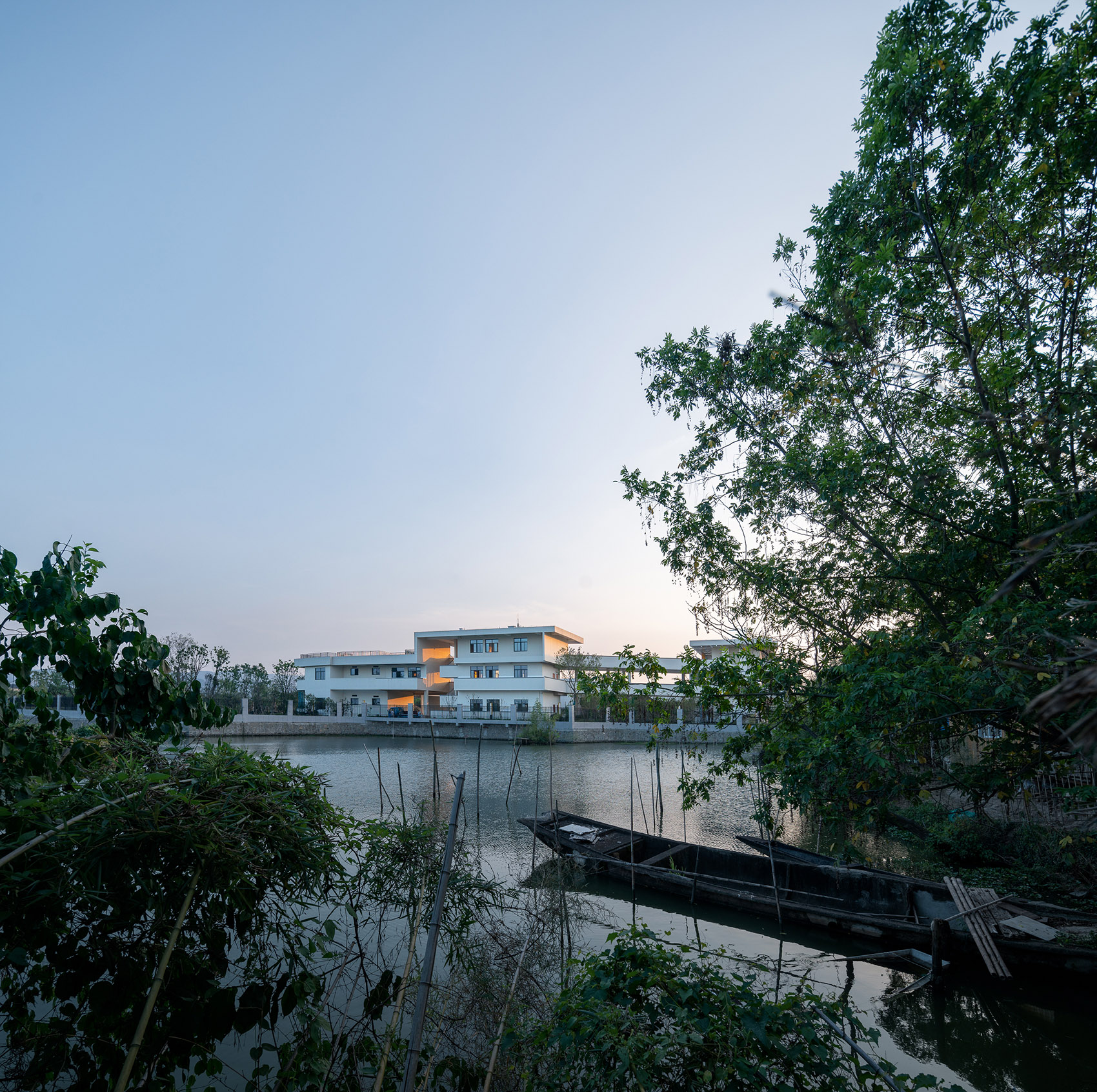
▼建筑沿街外观,view of the building from the street ©吴清山
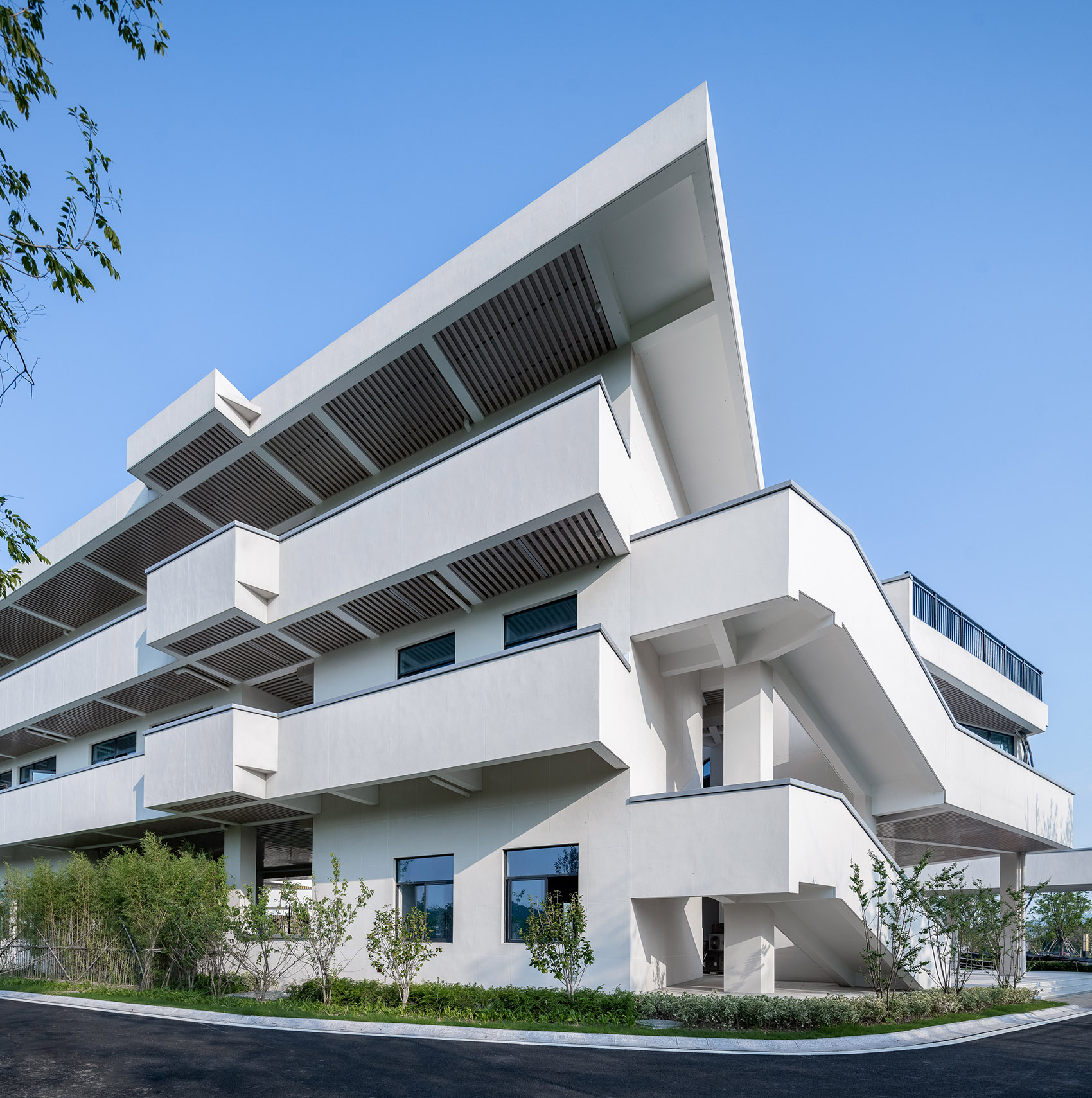
小班化的一大优点就是师生比增高,每个孩子都因此分得更多的教学资源。我们需要在空间设计上强化这点。
One major advantage of small-class-teaching is the increase in the teacher-student ratio. More resources will be allocated to each student. This is something the architectural design shall enhance.
▼总平面图,site plan
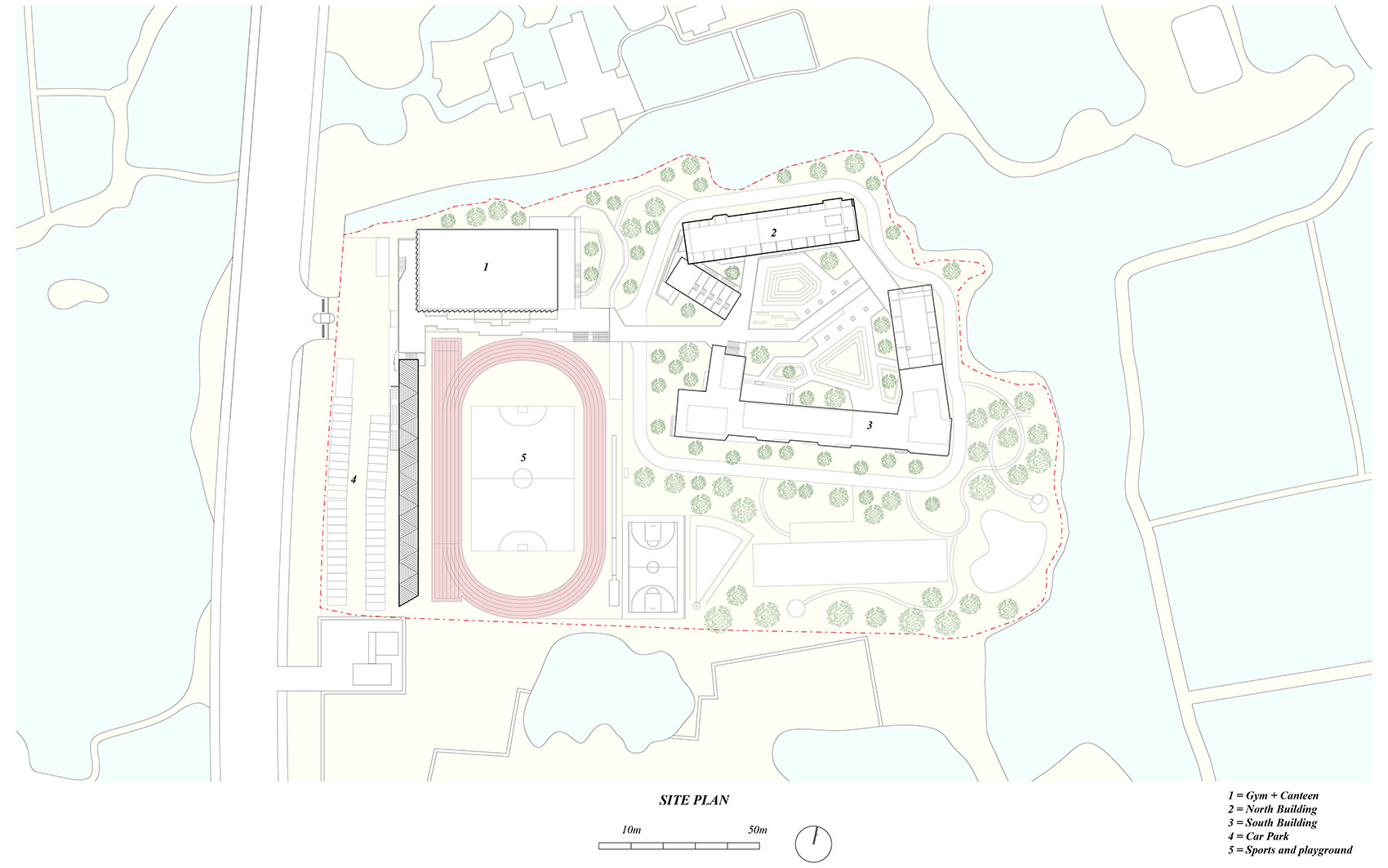
首先,我们突破传统的大办公室和教室分列的传统布局,采用了2个教室与1个“卫星”办公室组团的安排。因此,教师和学生的“接触面”增加了,并带来三点变化:1.客观上增加师生互动,每个学生得到更多关注,进而强化小班化教学优势;2. 教学活动在时间、空间上会得到重组,教学不只是发生在40分钟之内的教室座位上;3. “卫星”办公室分布在学校各处,这客观上需要建筑内部交通便利,以方便任课老师达到任何教室。
First, we challenged the traditional school layout in which all teachers share one general teacher-office. We paired 2 classrooms with 1 small, “satellite” teacher-office to form the primary module for the architectural layout. The immediate adjacency between classrooms and teacher-offices has at least three benefits: 1. It encourages teacher-student interactions. Each student will receive more attention from the teachers. 2. The curriculum could be re-arranged in terms of both time and space. Teaching can take place outside of the classrooms, and outside of the 40-minute timeframe of the class. 3. As the general teacher-office was broken down into various small satellite offices and redistributed around the 2 major buildings, it encouraged the development of a dynamic, continuous circulation system throughout the school.
▼整体鸟瞰,overall aerial view ©吴清山
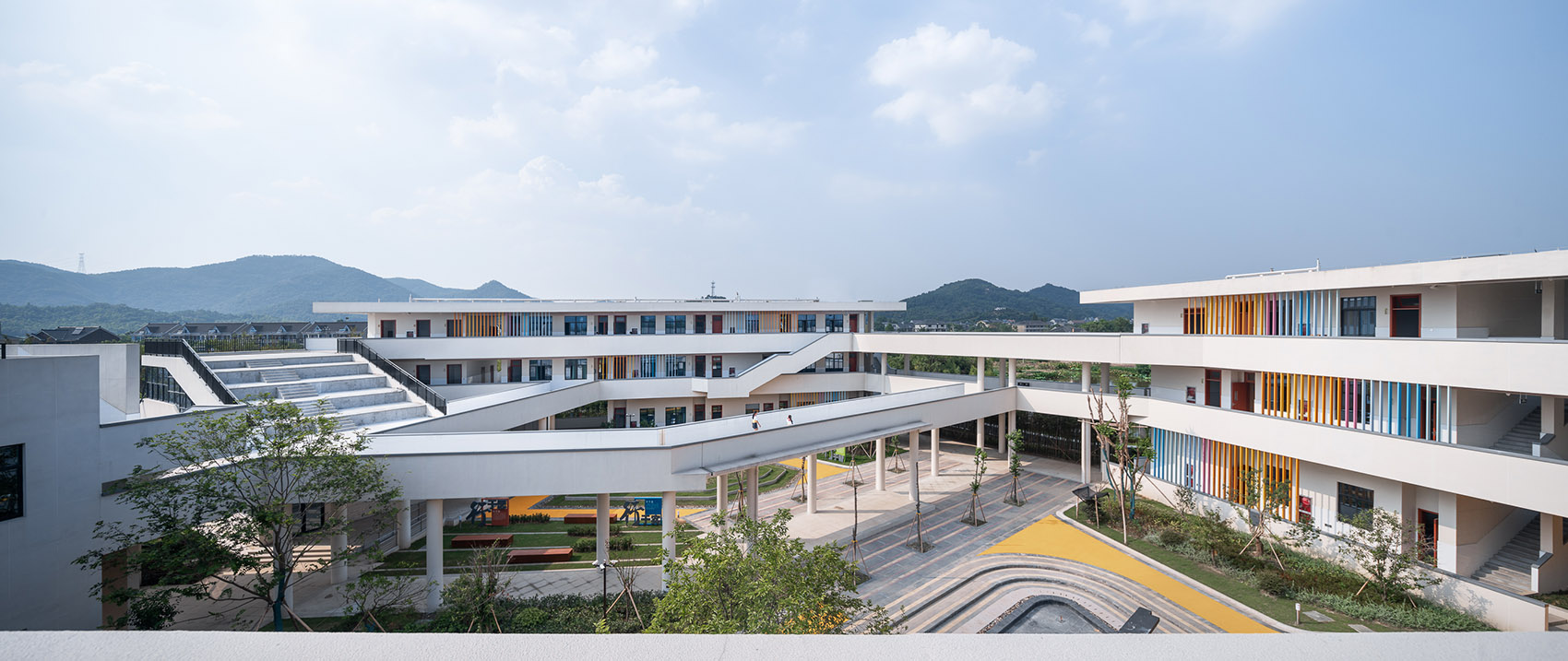
▼操场边的室外走廊,outdoor corridor beside the playground ©吴清山
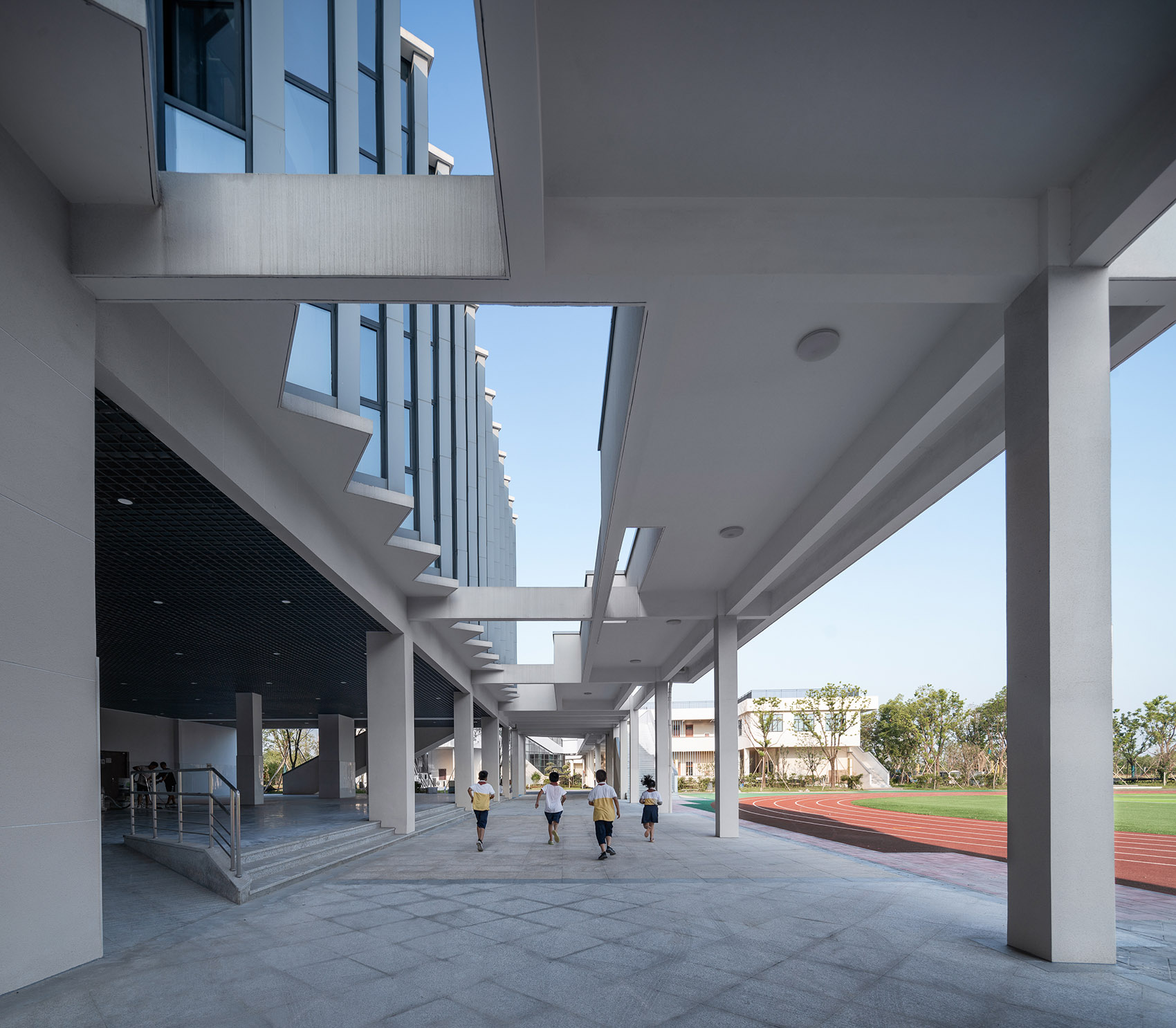
▼从走廊看向操场,view to the playground from the corridor ©吴清山
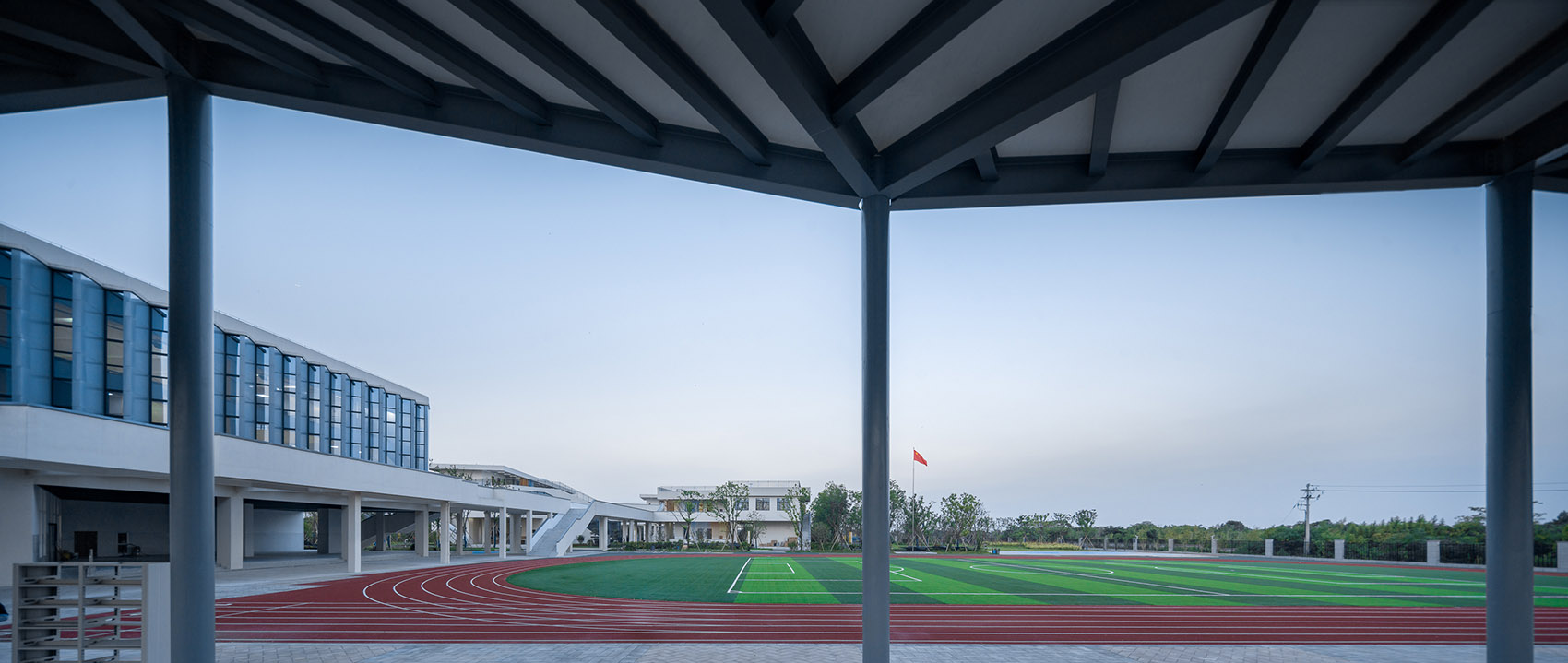
▼建筑之间的庭院,courtyard between the building volumes ©吴清山
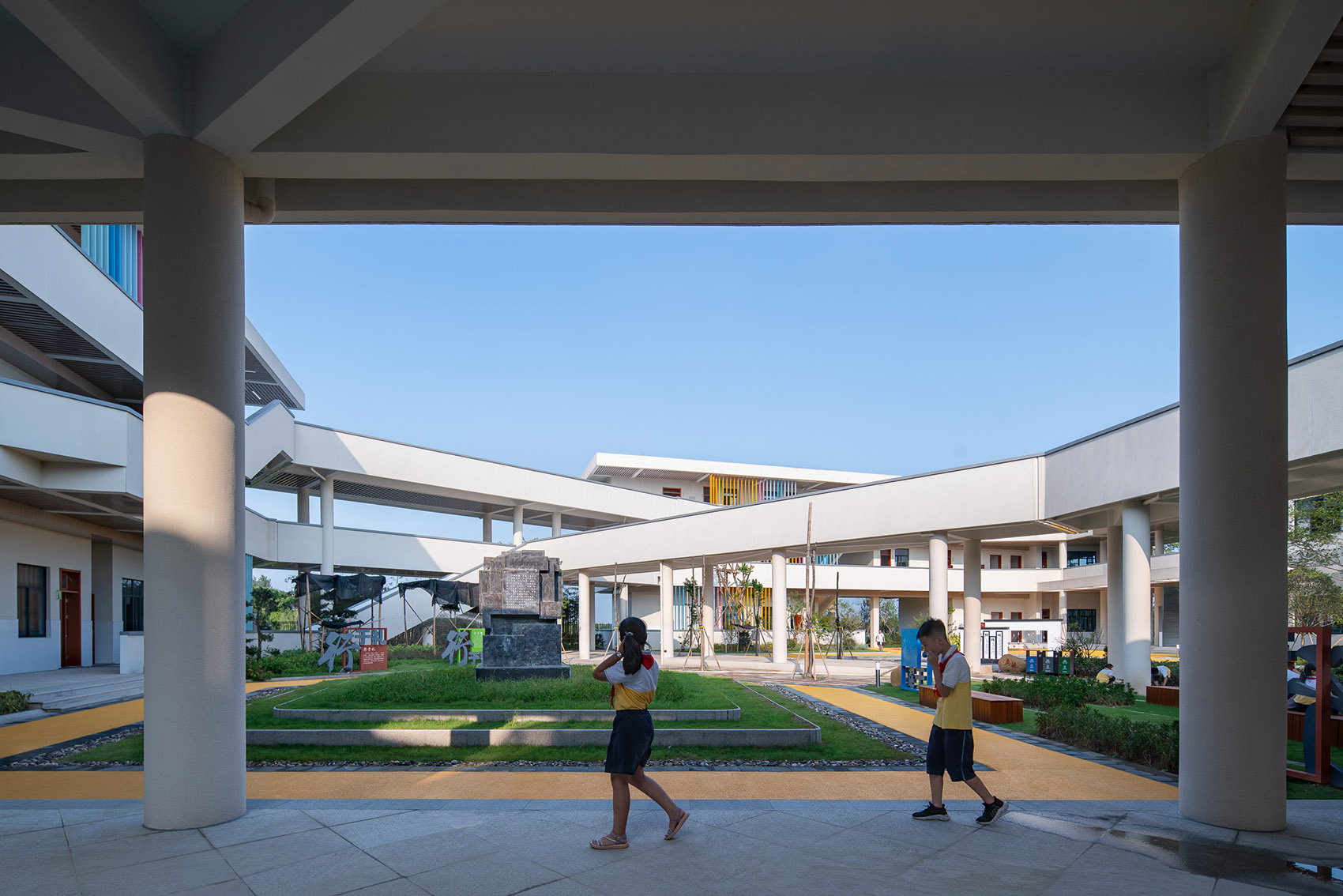
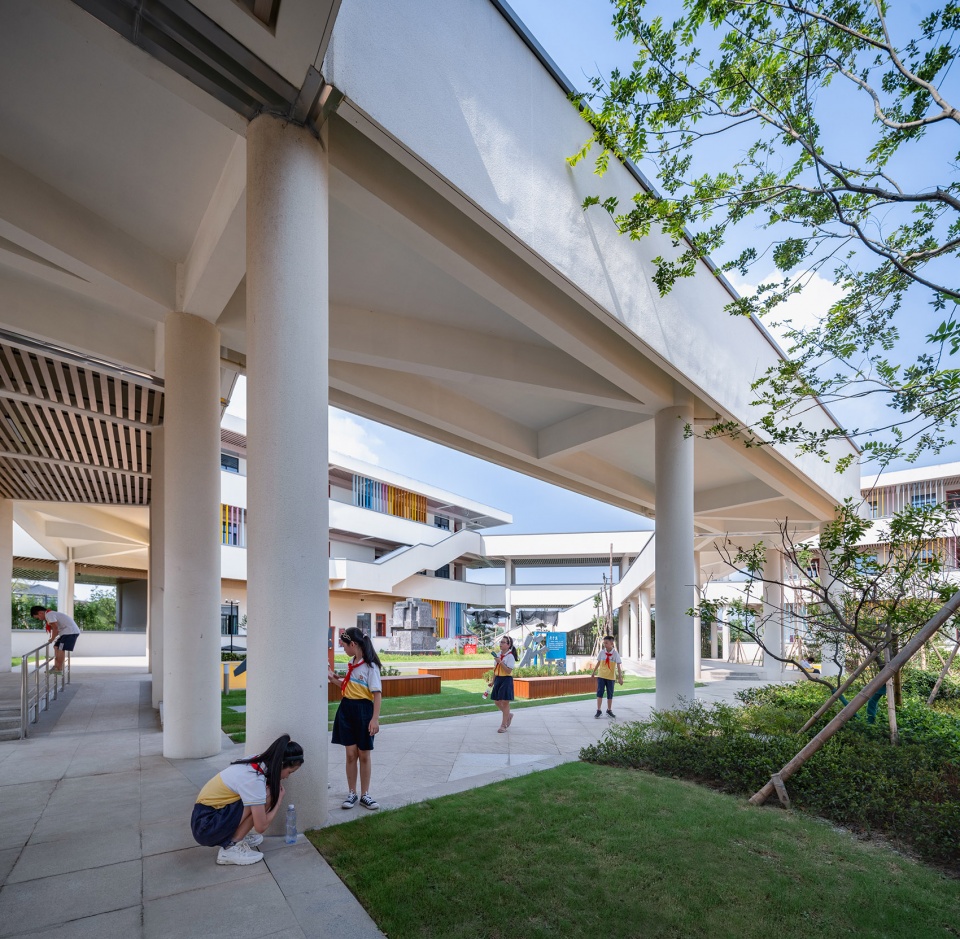
▼丰富的底层室外空间,various outdoor spaces on the ground floor ©吴清山


▼交错的楼梯,interlaced staircases ©吴清山

▼通向二层走廊,way to the second floor corridor ©吴清山

其次,24人的班级可以做得比较小,我们把省下来的建筑面积摊到了教室门外的公共区域(灰空间),形成很多宽敞的走廊。我们甚至将部分走廊进一步放大成“没有墙的房间”,击穿建筑体量,形成南北通透的洞口。这些宽敞明亮的走廊串联起散落在各层各楼的“没有墙的房间”形成了环通全校的立体交通体系。这个空间特色鼓励孩子们在课间充分活动,享受新鲜空气而无日晒雨淋之虞,在南方的漫长的雨季也能有足够的室外活动。
We further proposed to reduce classroom sizes from 48 students per class to 24, and designated the remaining floor areas to semi-outdoor shared spaces that include widened corridors and “pocket spaces”. These pocket spaces act as punch-holes in the massing of the buildings, facilitating natural ventilation. The combination of corridors and pocket spaces forms one continuous, dynamic circulation system throughout the campus. This design feature allows children to have semi-outdoor activities even during the prolonged monsoon season.
▼宽敞的走廊在上层形成丰富的室外活动空间,spacious corridors creating various activity spaces on the upper floor ©吴清山
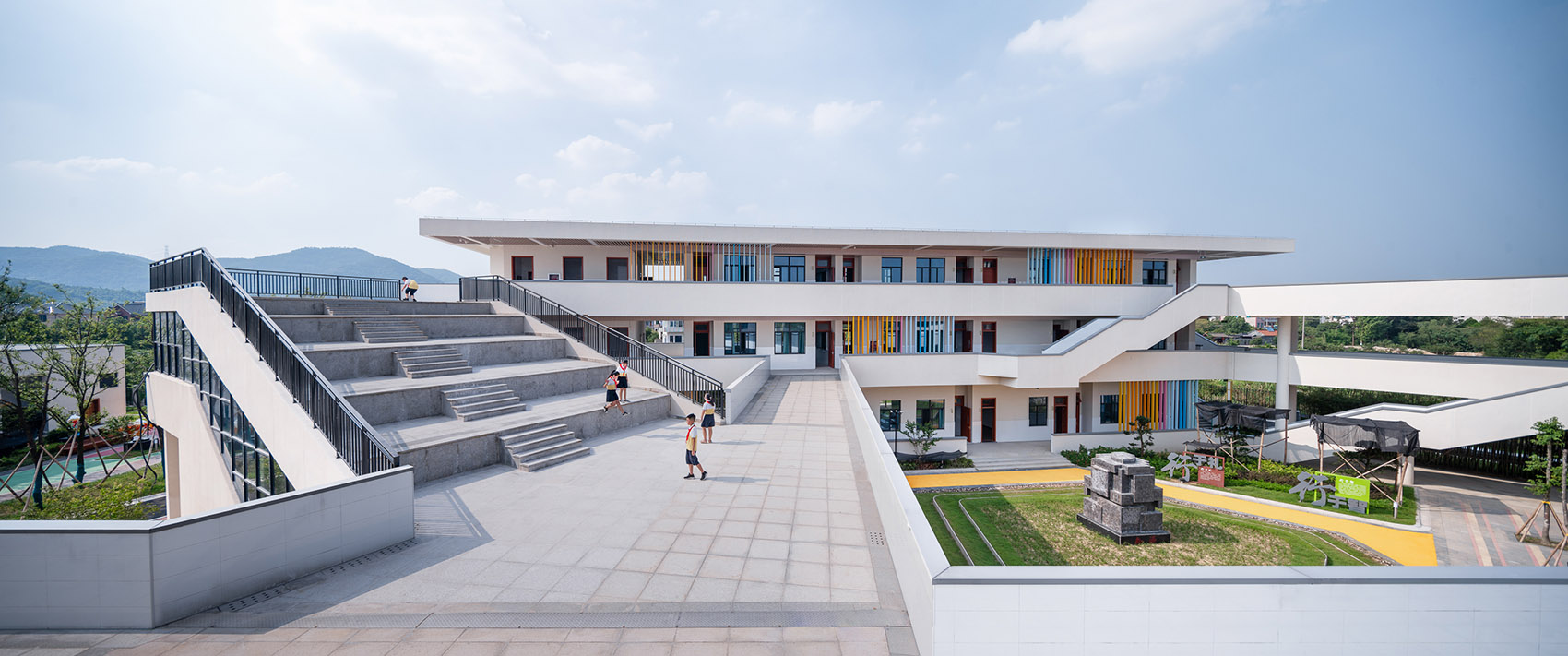
▼走廊公共空间,public space on the corridor ©吴清山
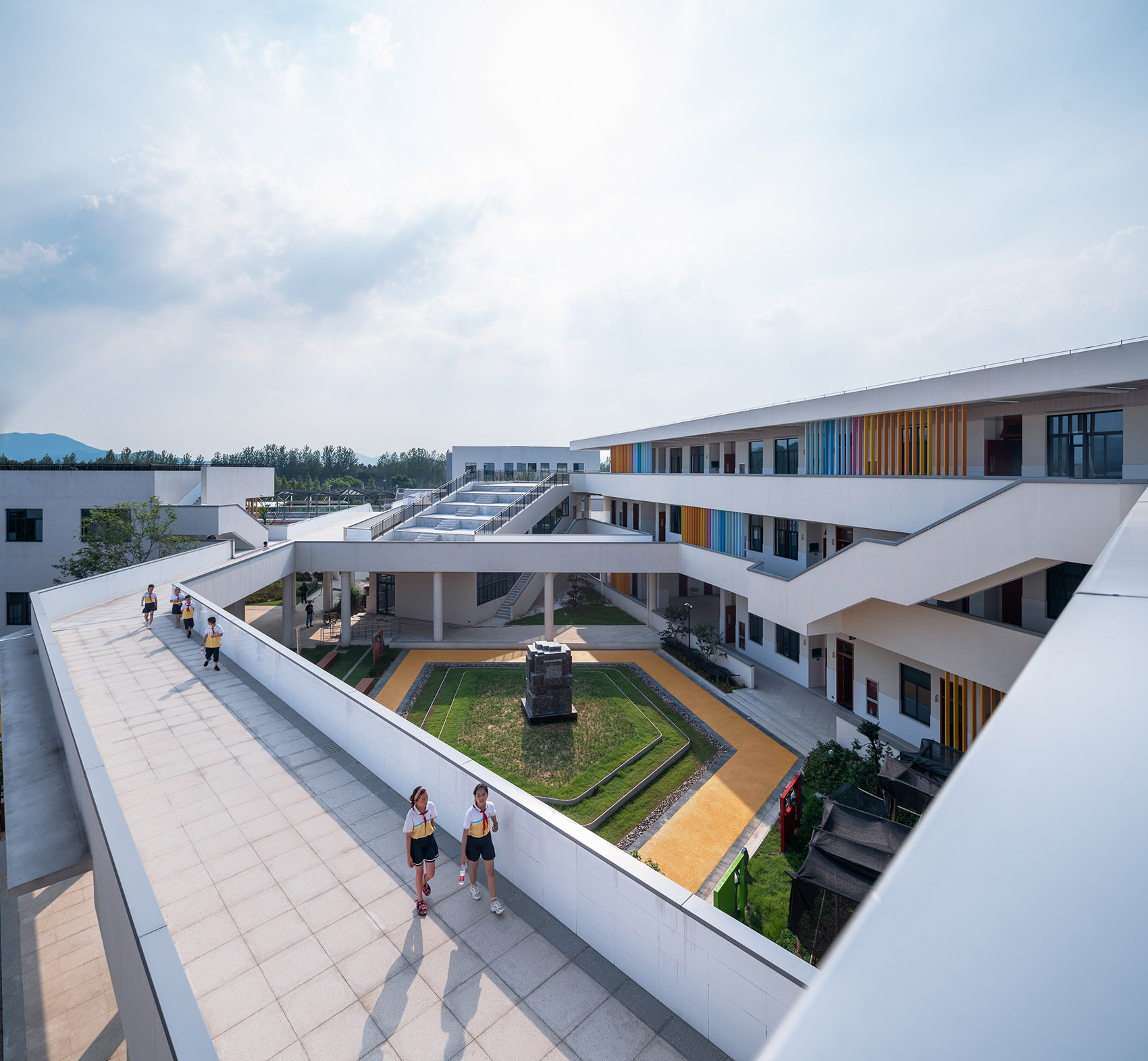
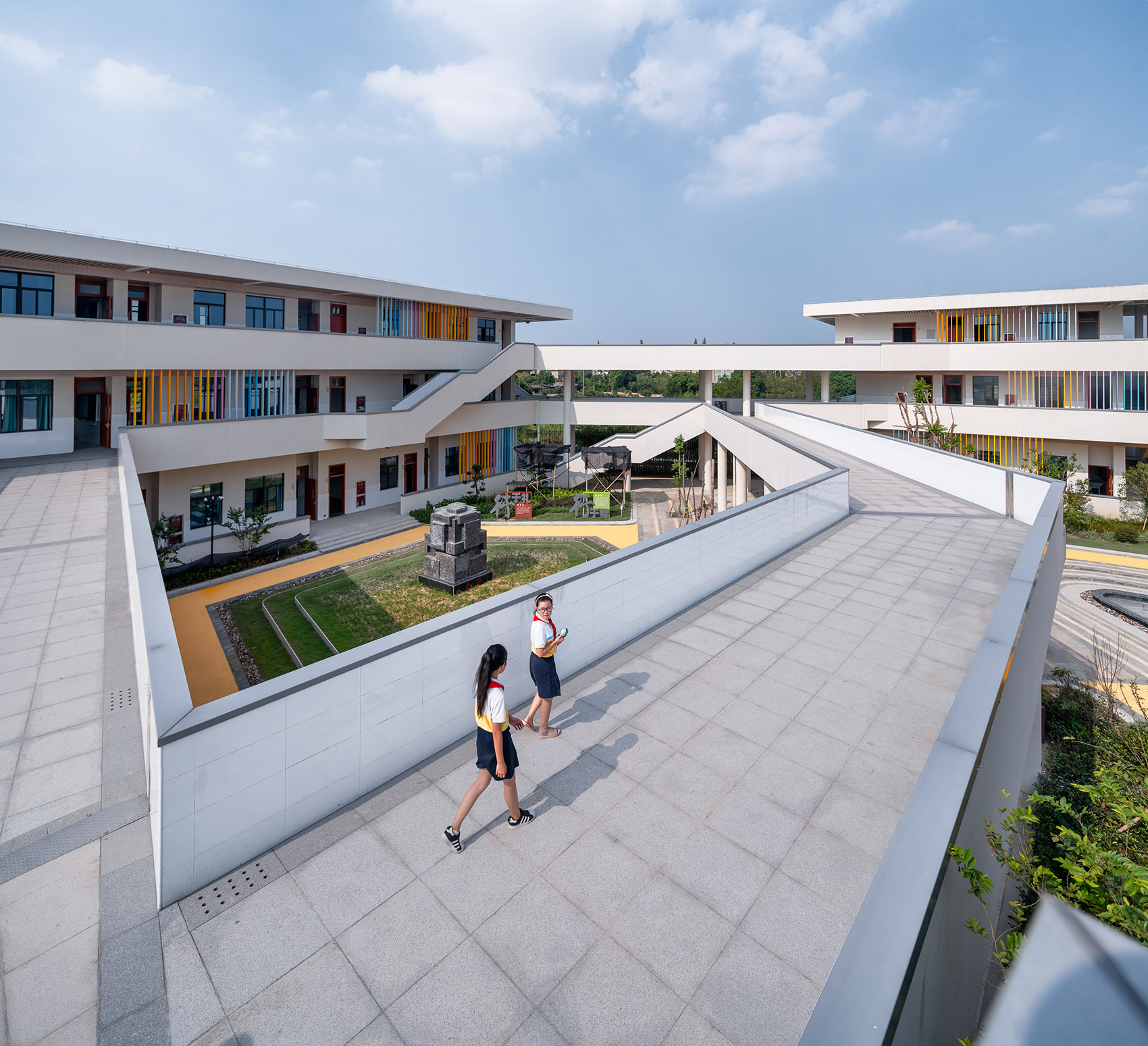
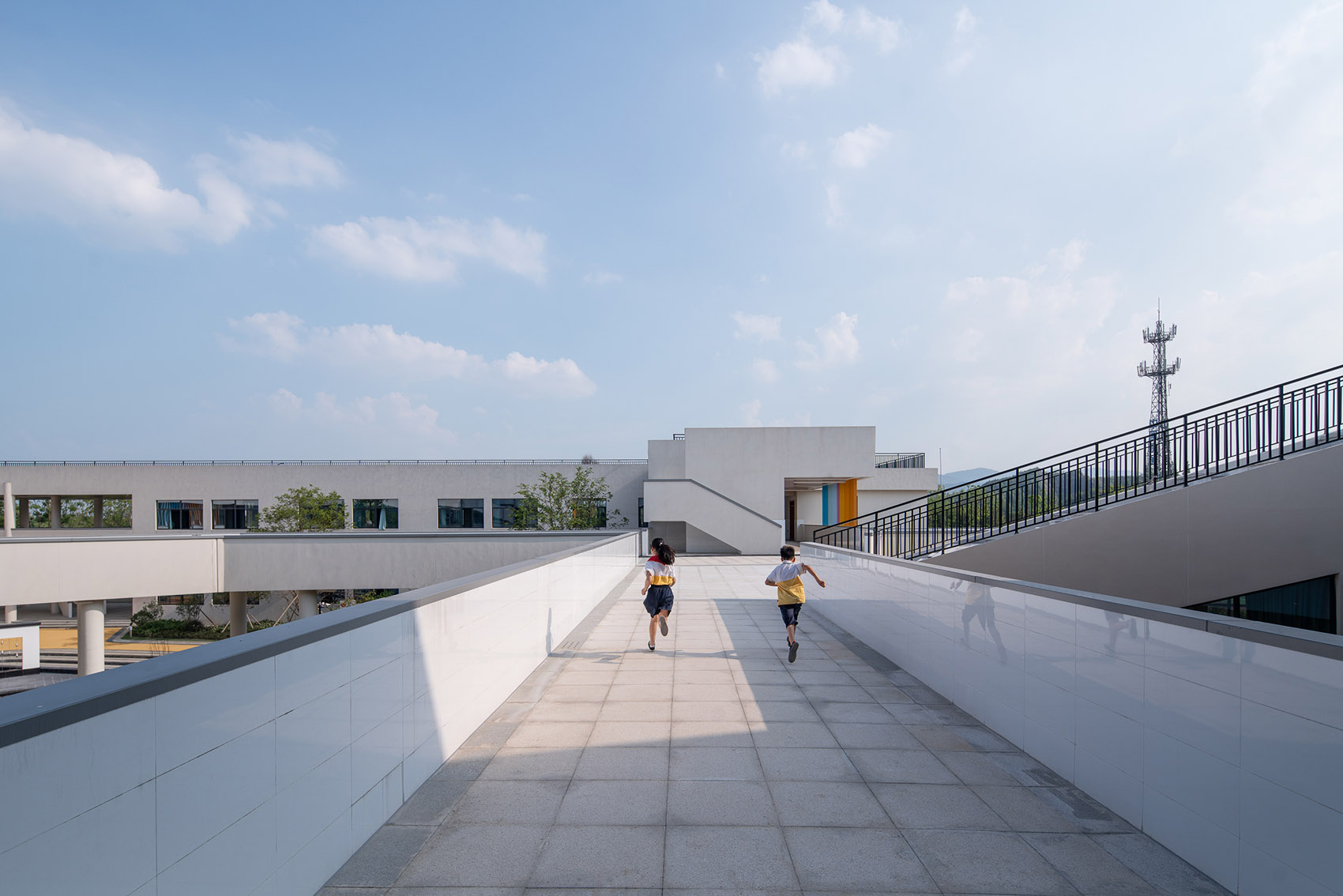
▼阶梯教室,stepped class room ©吴清山

二都小学已经于2020年秋季开学,我们期待在祖国变化的乡村有更多这样的尝试。
Erdu Primary School was open in the fall of 2020. We hope to see more pioneering architectural projects in rural China soon.
▼夜景,night view ©吴清山
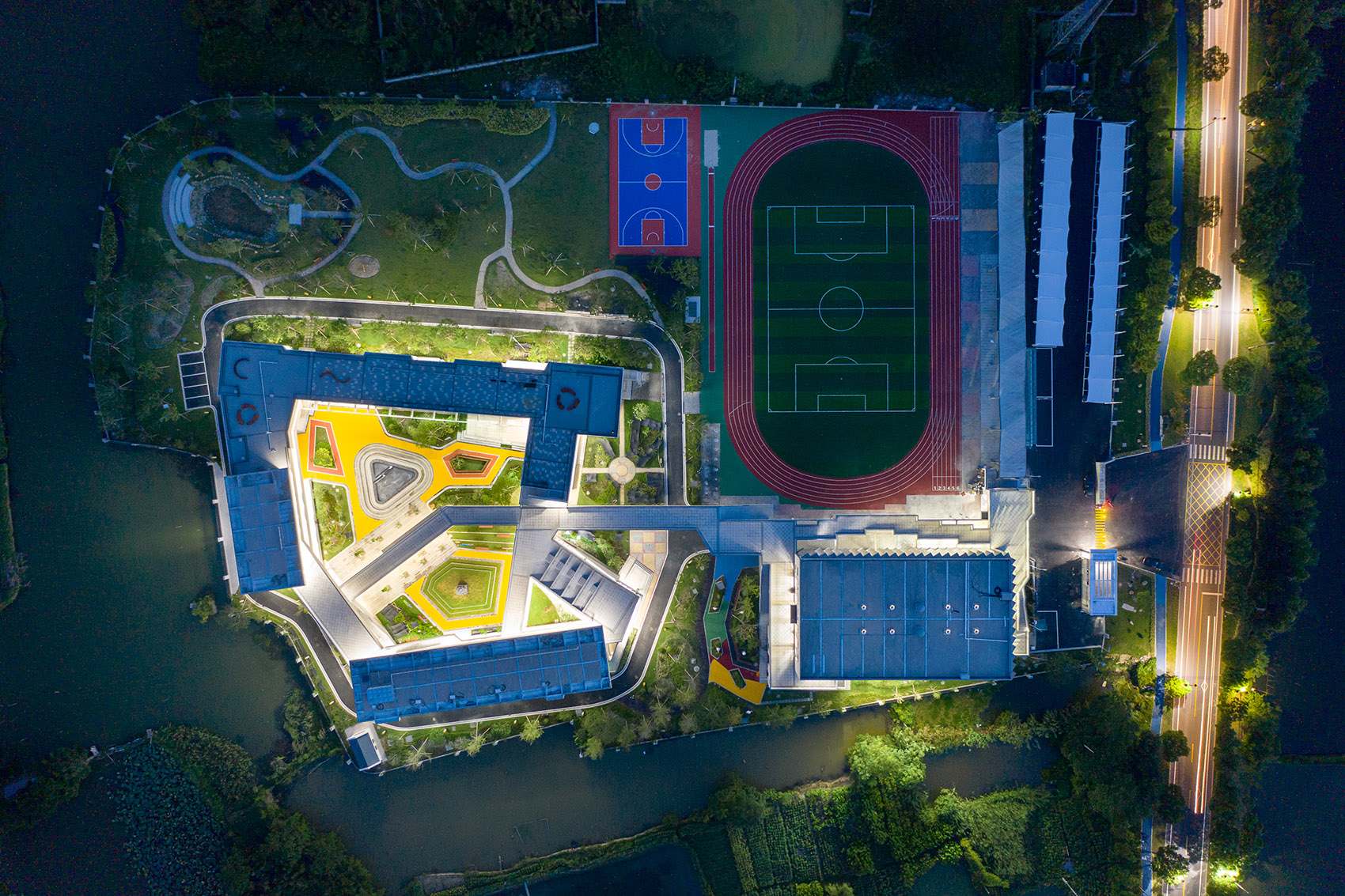

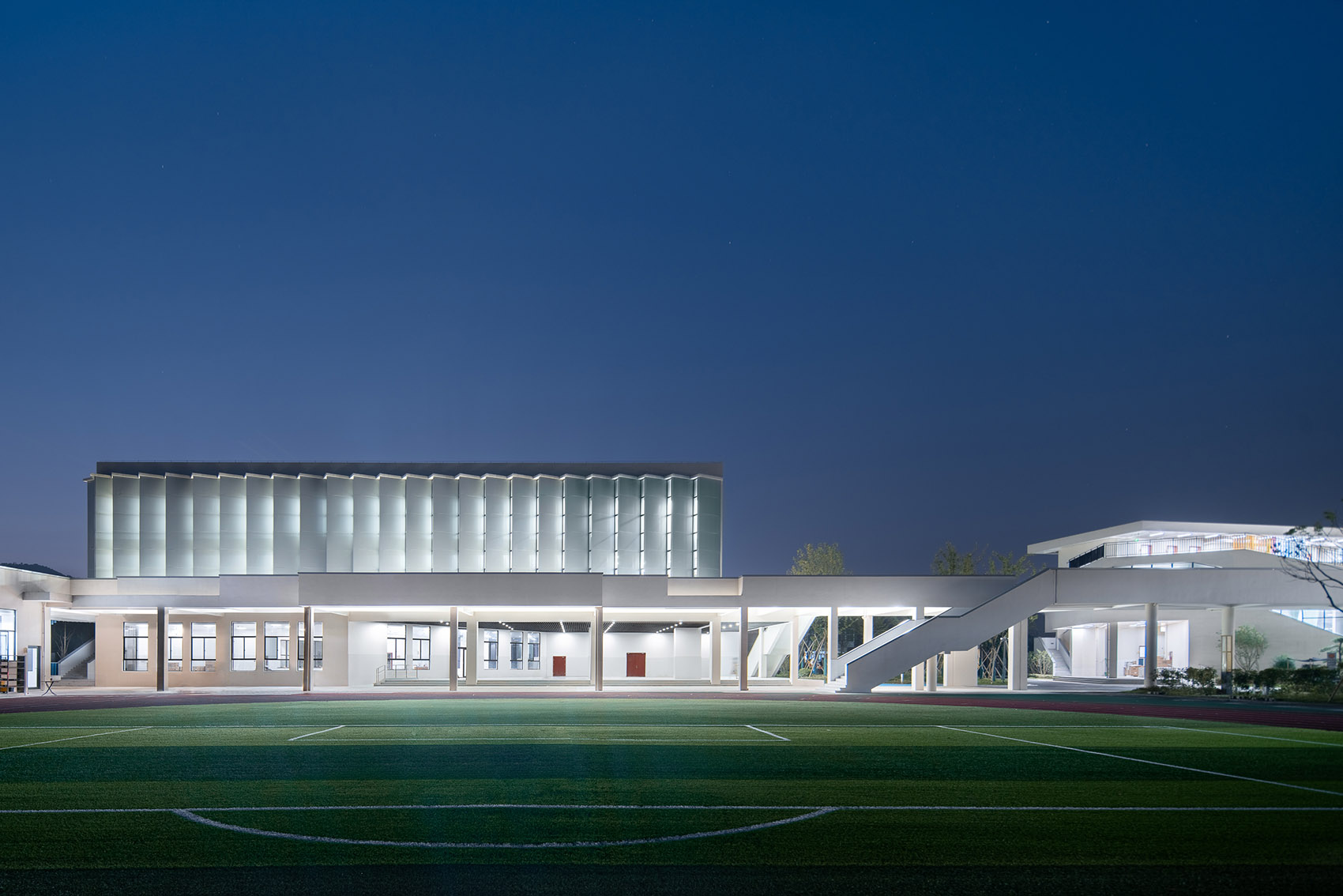
▼一层平面图,first floor plan
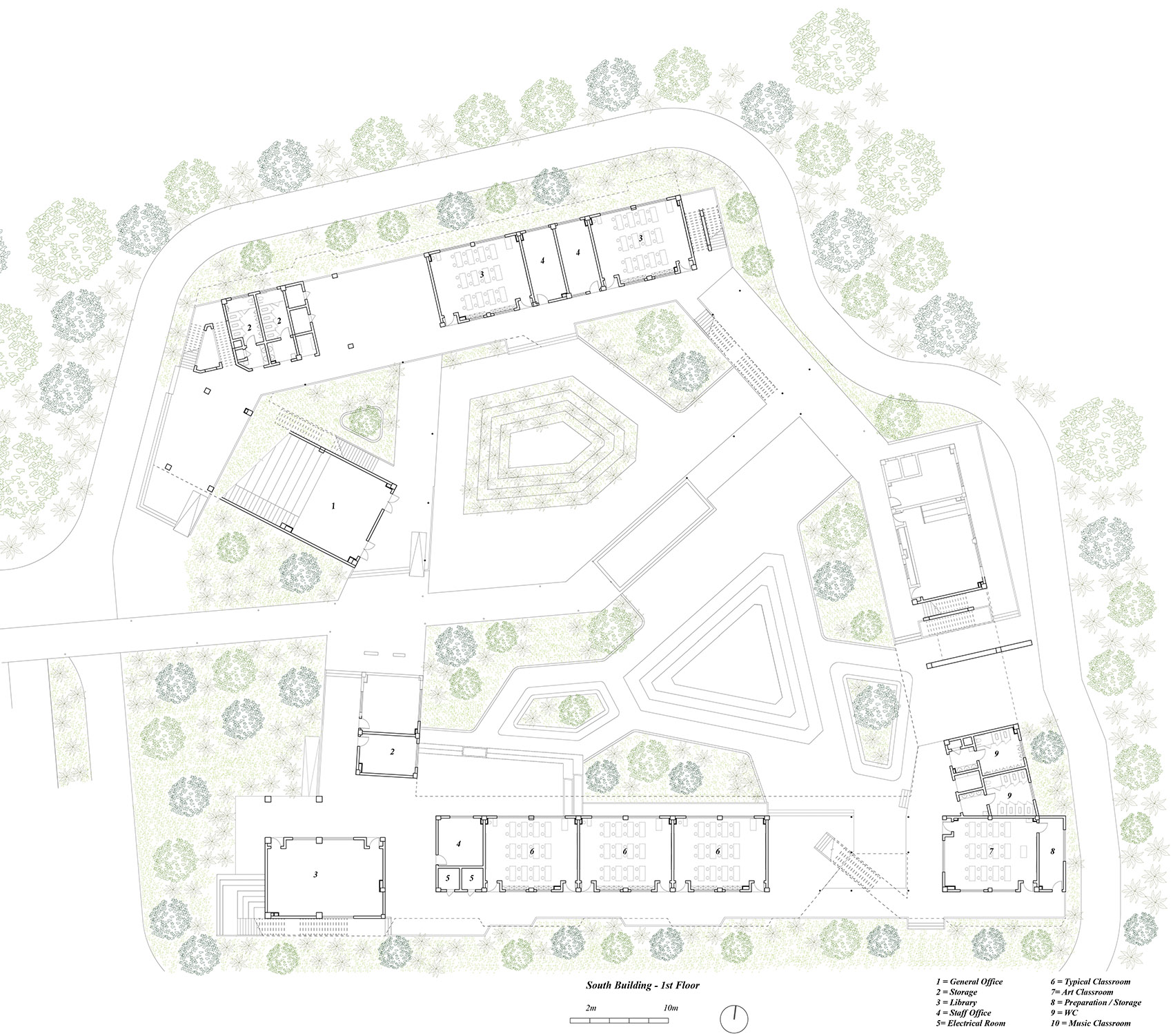
▼北侧建筑二层平面图,second floor plan of the north building
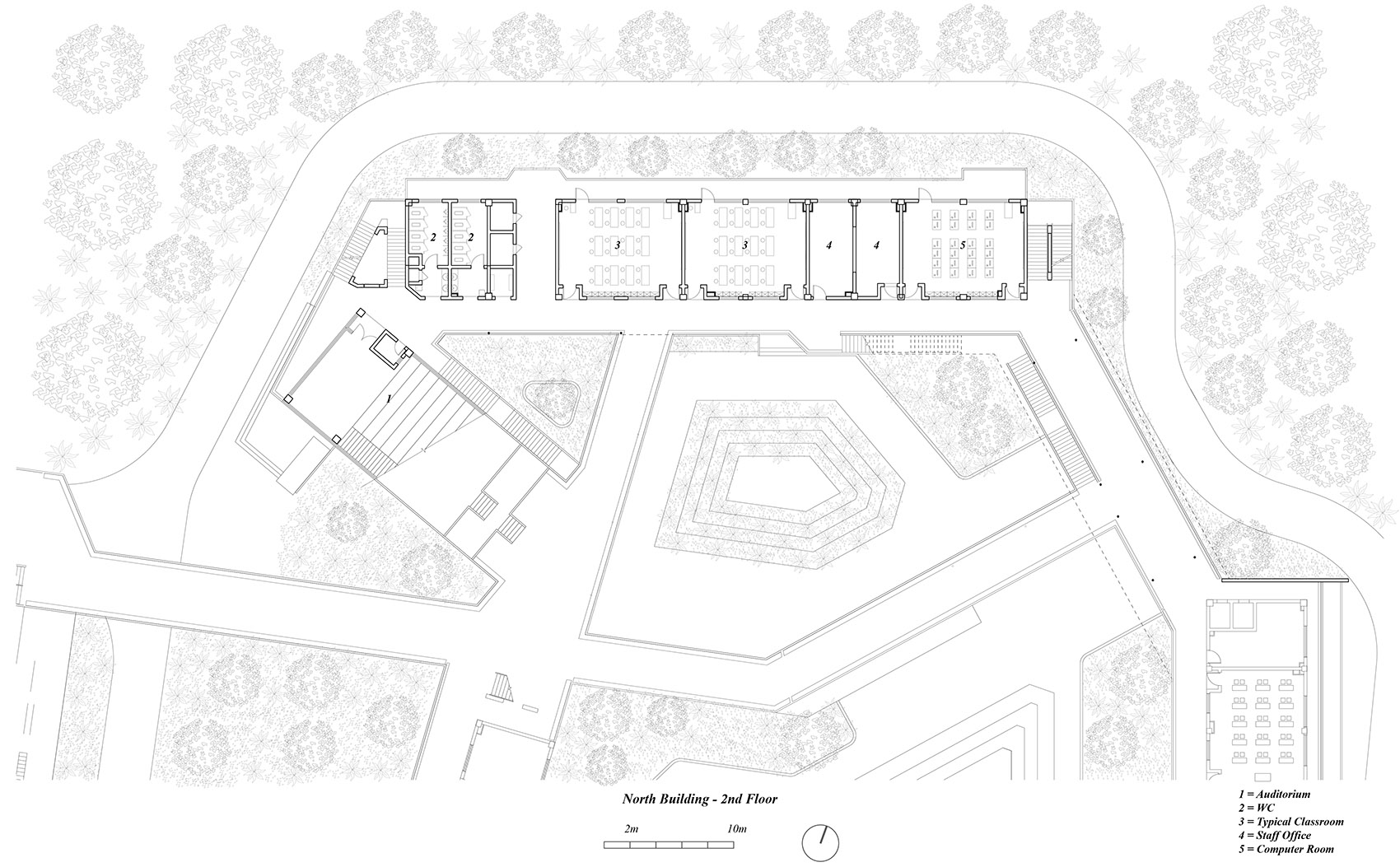
▼南侧建筑二层平面图,second floor plan of the south building
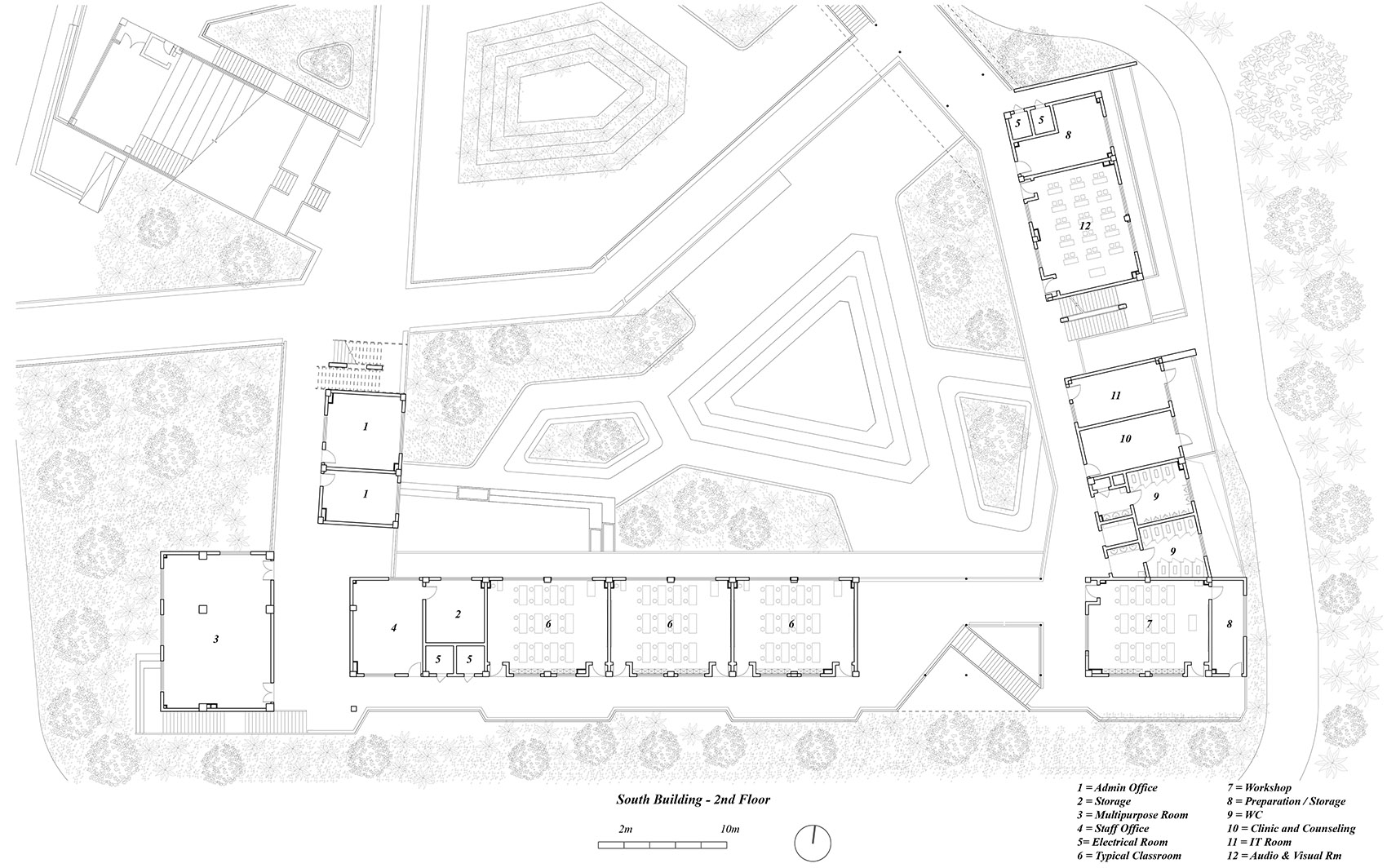
▼一层餐厅平面图,Canteen plan on the first floor
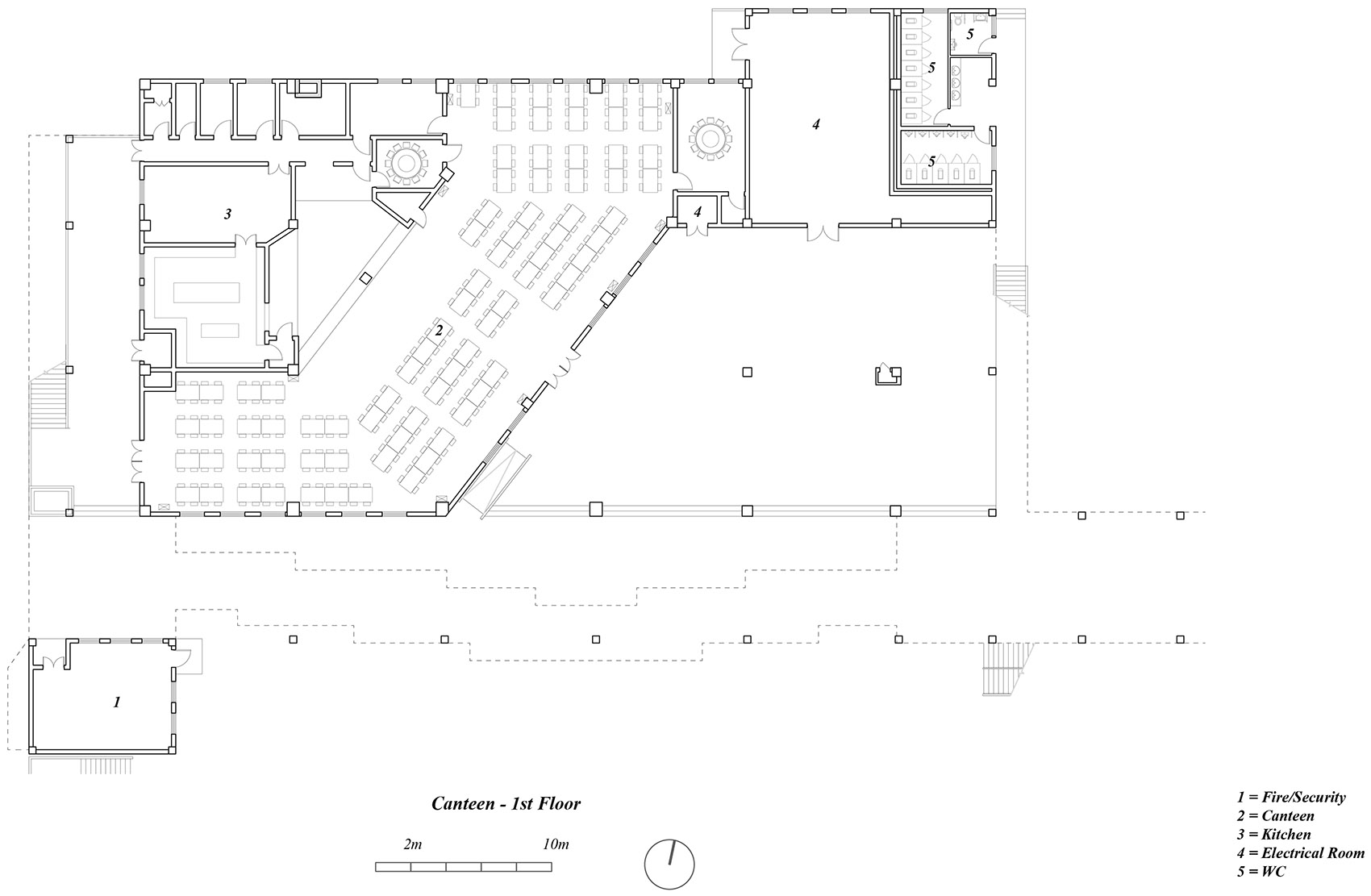
▼二层体育馆平面图,Gym plan on the second floor
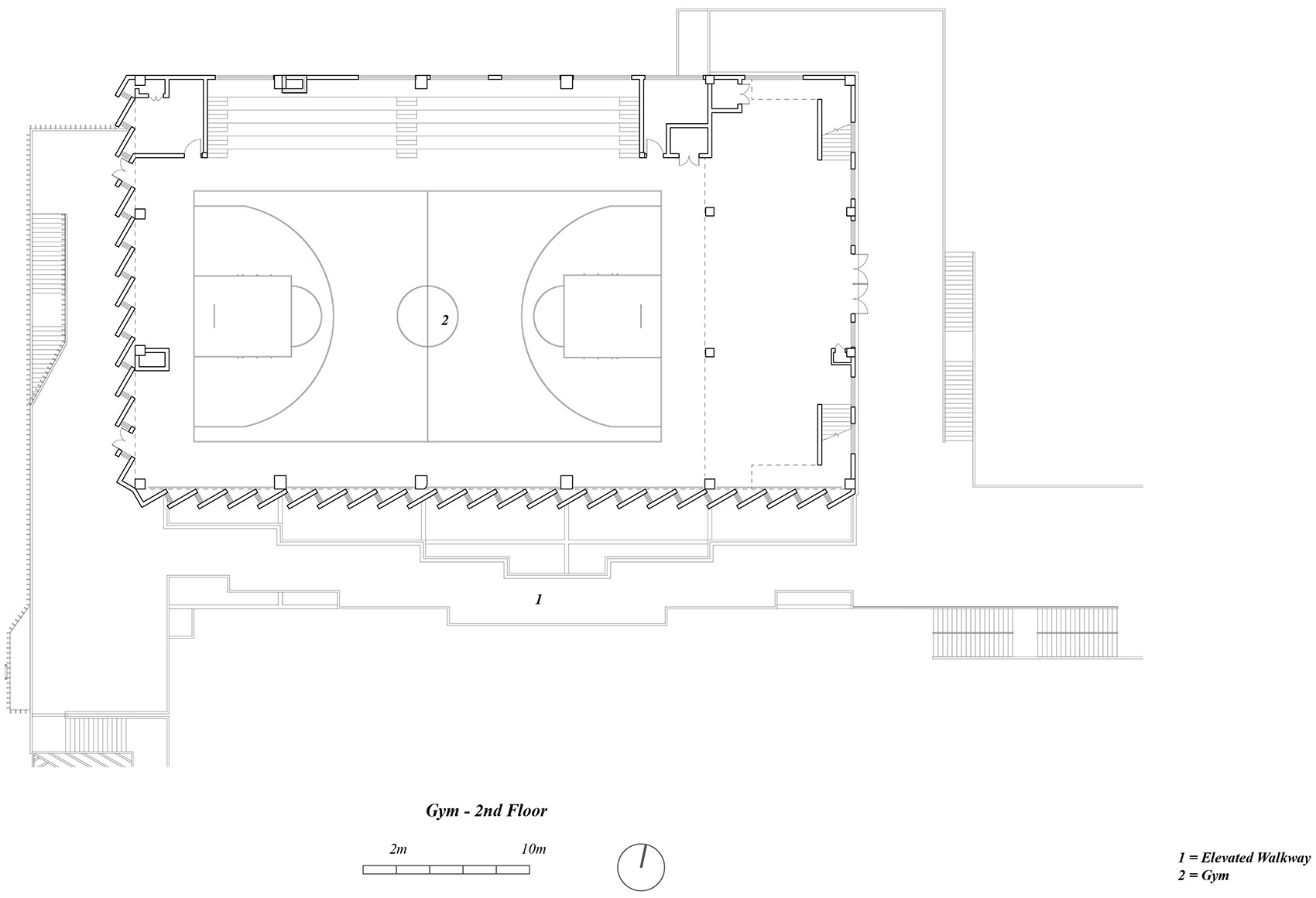
Other participants: 方案团队 SD-DD phase team: 邱佳羽Qiu Jiayu,莫哲昕 Paul Mok 浙工大团队 CD phase team: 设计总负责Lead Architect:季怡群 Ji Yiqun 建筑设计CD Team:雷准会 Lei Zhunhui 孙悦 Sun Yue 黄子倩 Huang Ziqian 结构设计 Structural Engineering:金成 Jin Cheng 蒋文峰 Jiang Wen Feng 给排水电气暖通设计 MEP Engineering:吴梁 Wu Liang 方歆霞 Fang Xinxia单巨维 Shan Juwei魏炜 Wei Wei
Photo credits: 吴清山 Wu Qingshan
